Ahhhhhhcadia National Park … a Lucky Charm bucket-list destination since Day One! Acadia was the first National Park created east of the Mississippi, and so so so very different from Western NP’s, with its rugged precipices along the Atlantic coastline, cobble beaches, and salty sea air.
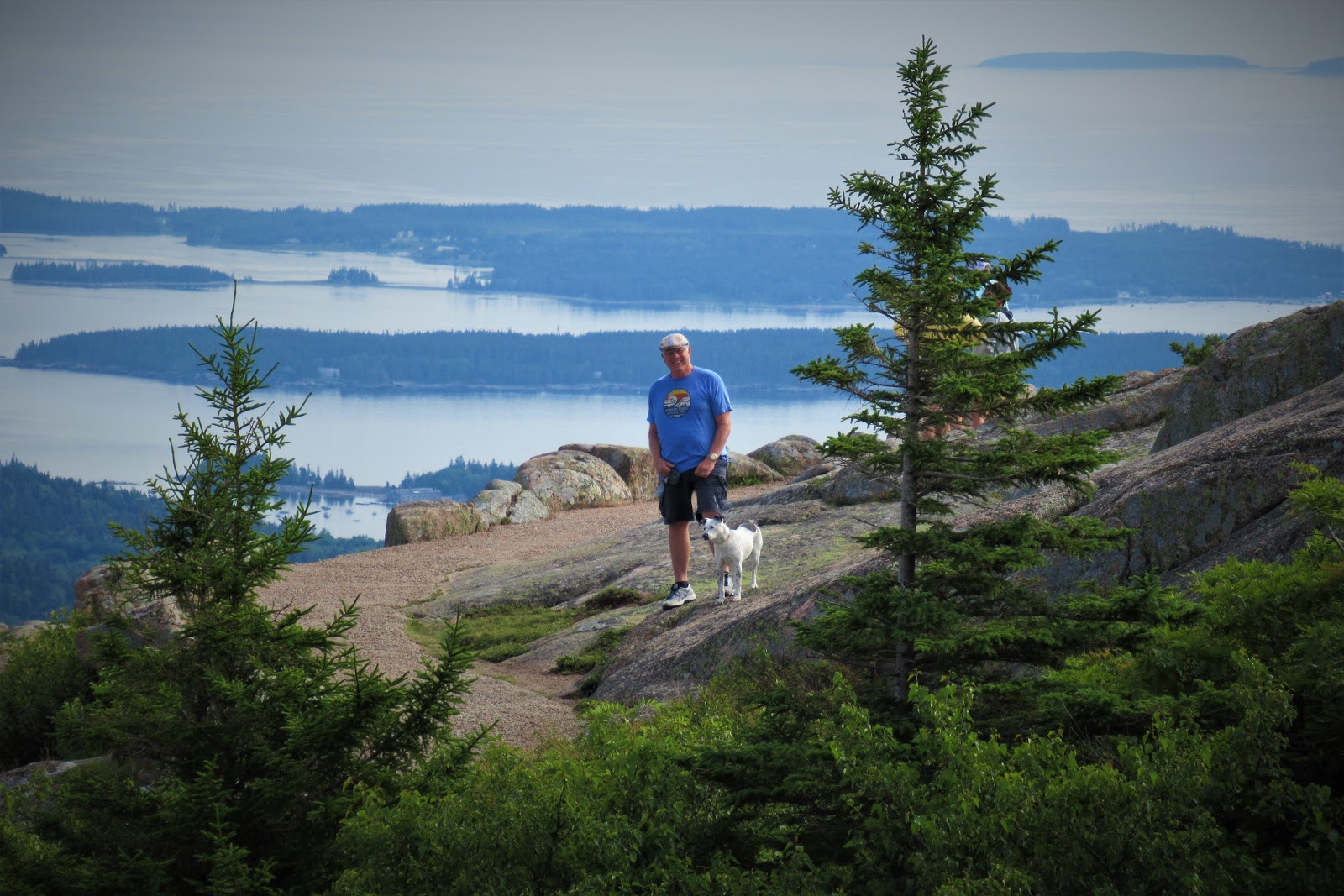

We’ve been practicing “vertical living” (enjoying life by recognizing the feedback from all your senses, no matter what you are doing, even the ordinary things). Of course, that’s easy to do in a place like Acadia … the sights, sounds and smells of the ocean and unspoiled nature are everywhere!
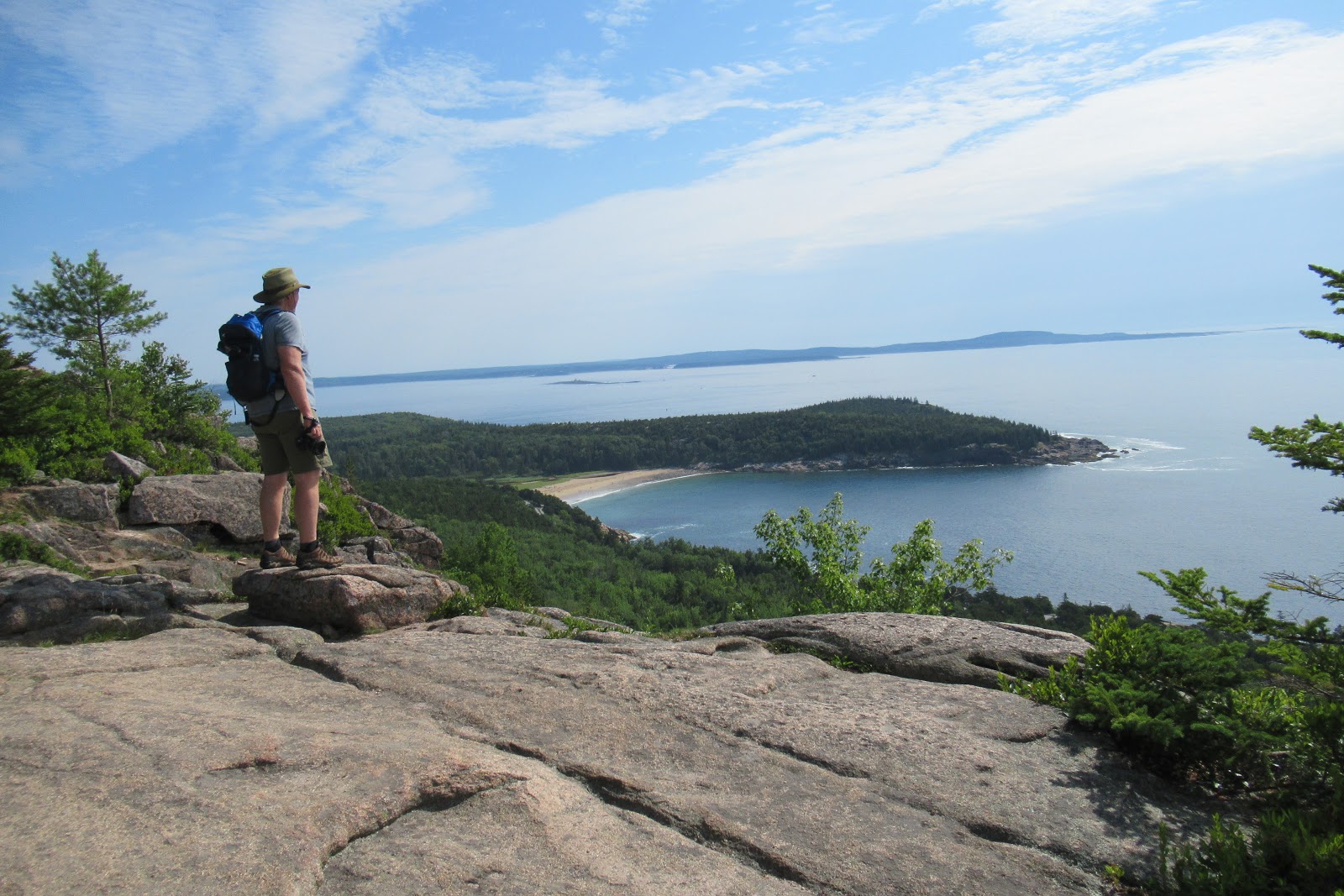
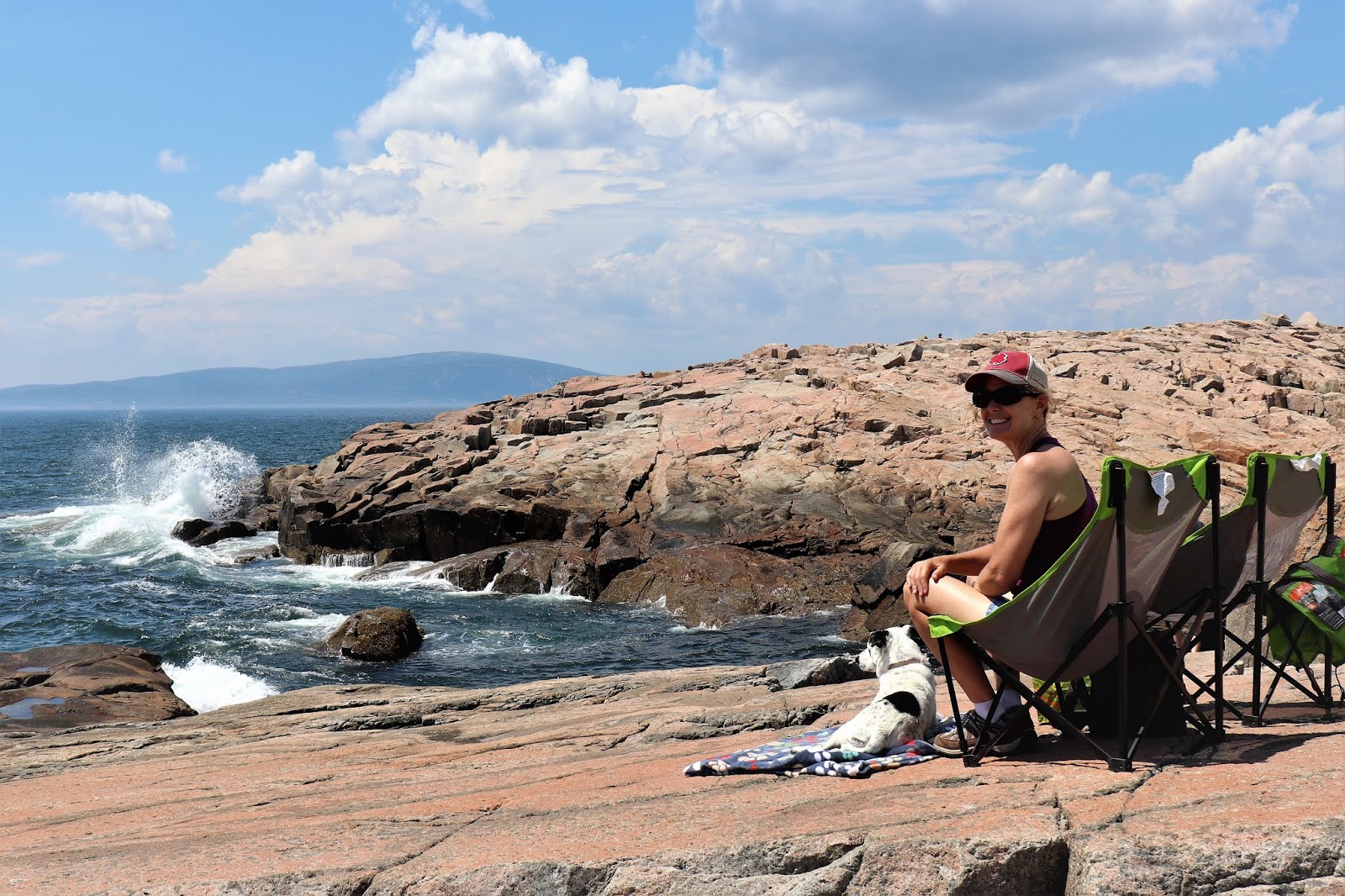
On every available surface, people were happily sunning, picnicking, painting art, reading books, picking through tidepools, and playing with children. Ahhhh, we could get used to this!



Acadia’s 49,000 acres are primarily located on Mount Desert Island, which for no apparent reason is pronounced “dessert.” Acadia’s land was donated entirely by private citizens (aristocrats like Vanderbilts, Pulitzers, Astors, Morgans, Fords and Rockefellers), who owned palatial summer homes they quaintly called “cottages” here amongst this scenery.
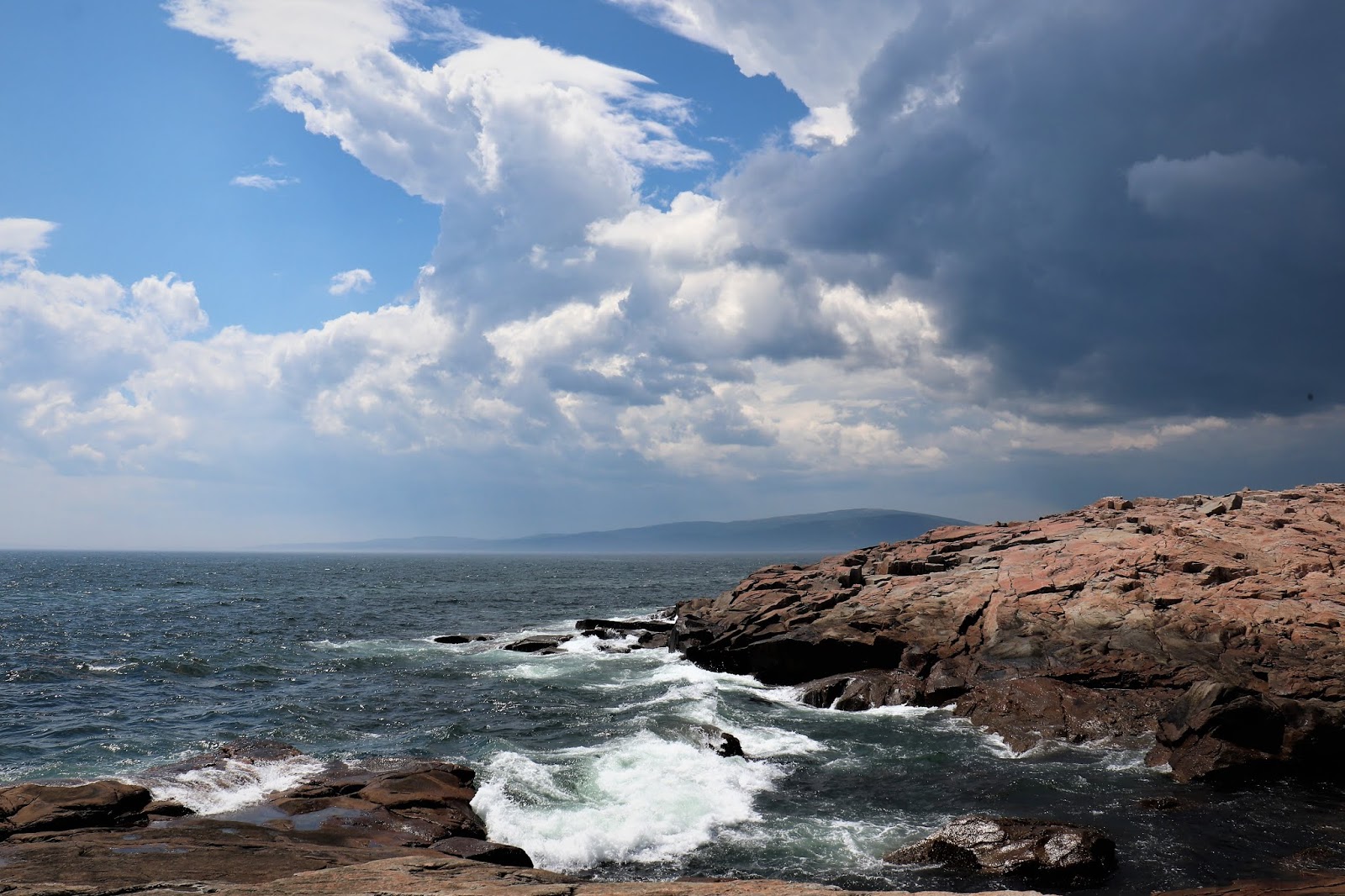
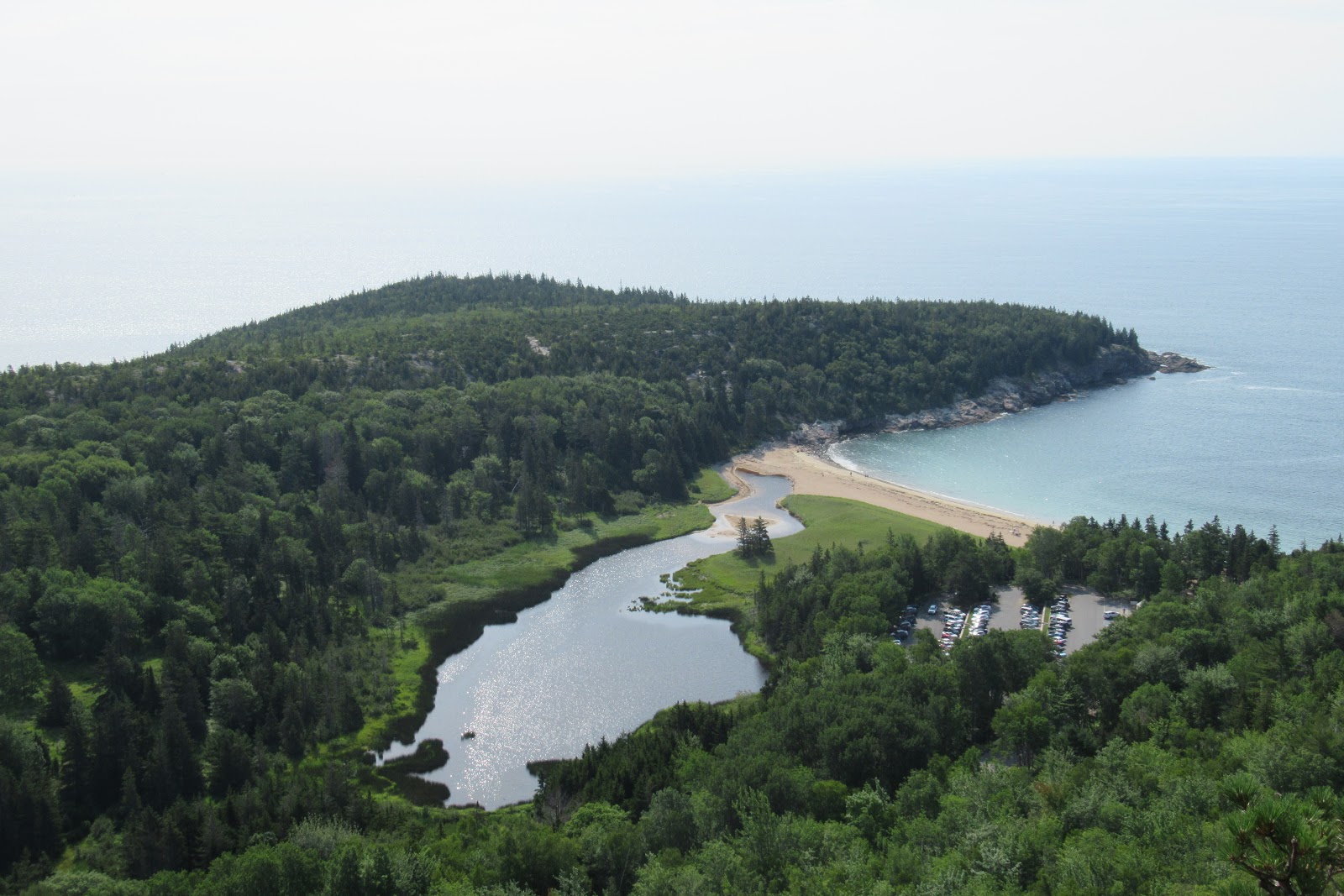
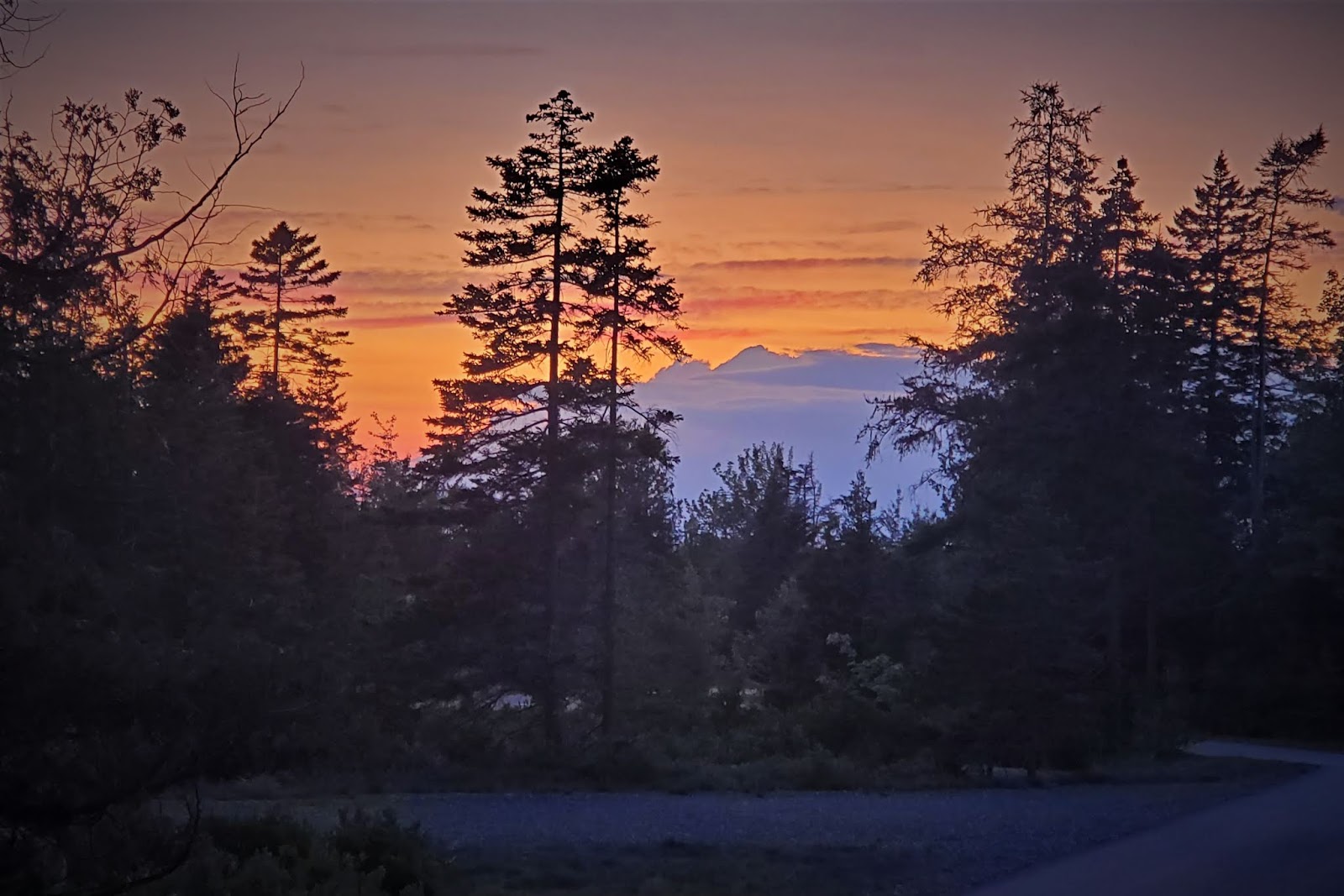
Acadia is one of the few NP’s that allow dogs to go everywhere! Happy dog alert!

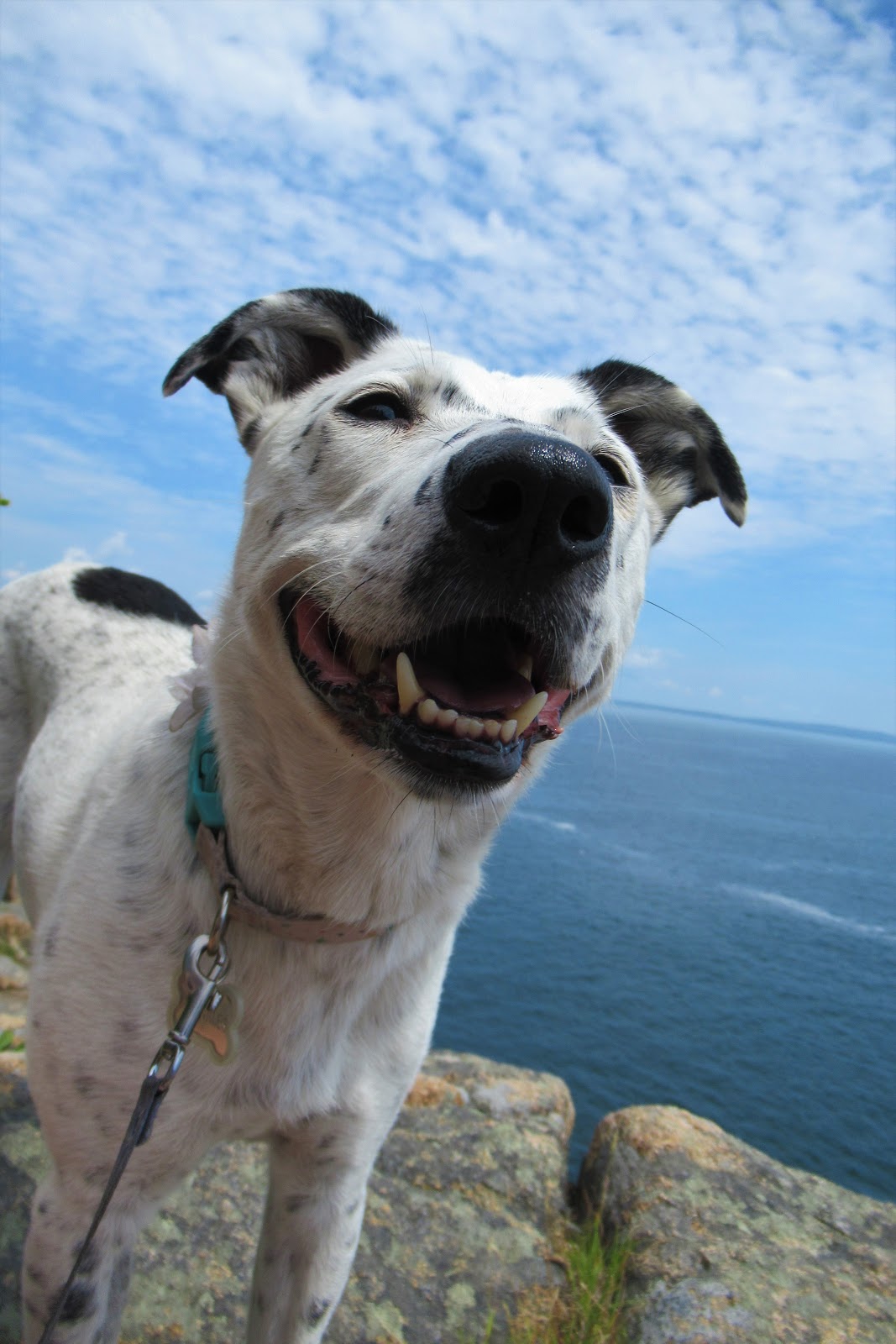
45 miles of crushed-gravel carriage roads were the gift of John D. Rockefeller Jr. and family between 1913-1940. Wide, flat, and gorgeous over rolling hills throughout the center of the park, they are every bicyclist’s dream come true!
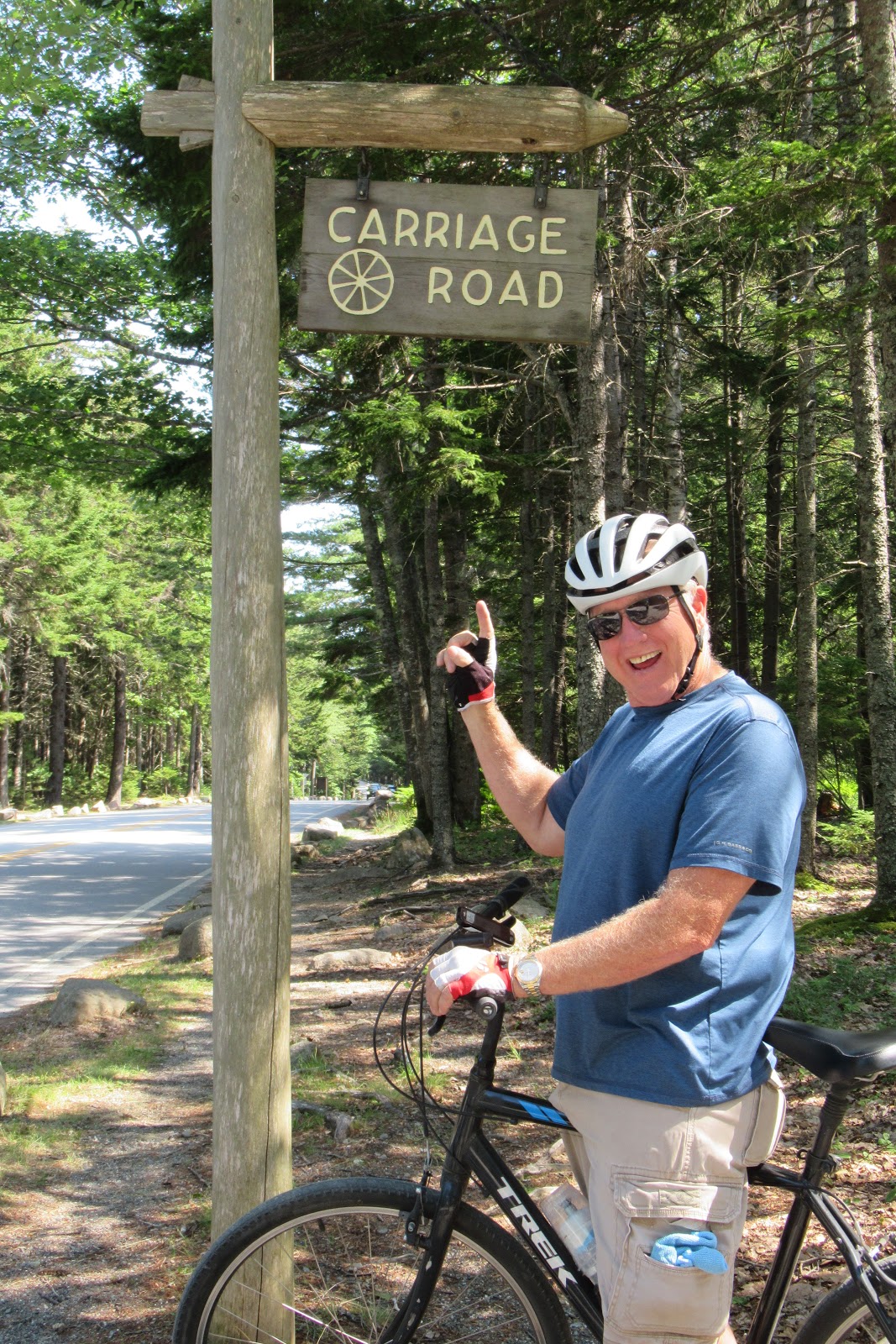
Like many rich folk, Rockefeller was a skilled horseman and wanted to travel into the heart of this area on motorcar-free roads. Today, walkers, joggers, horse riders and (mostly) bicyclists enjoy their beauty and safety alongside mountains and lakes.
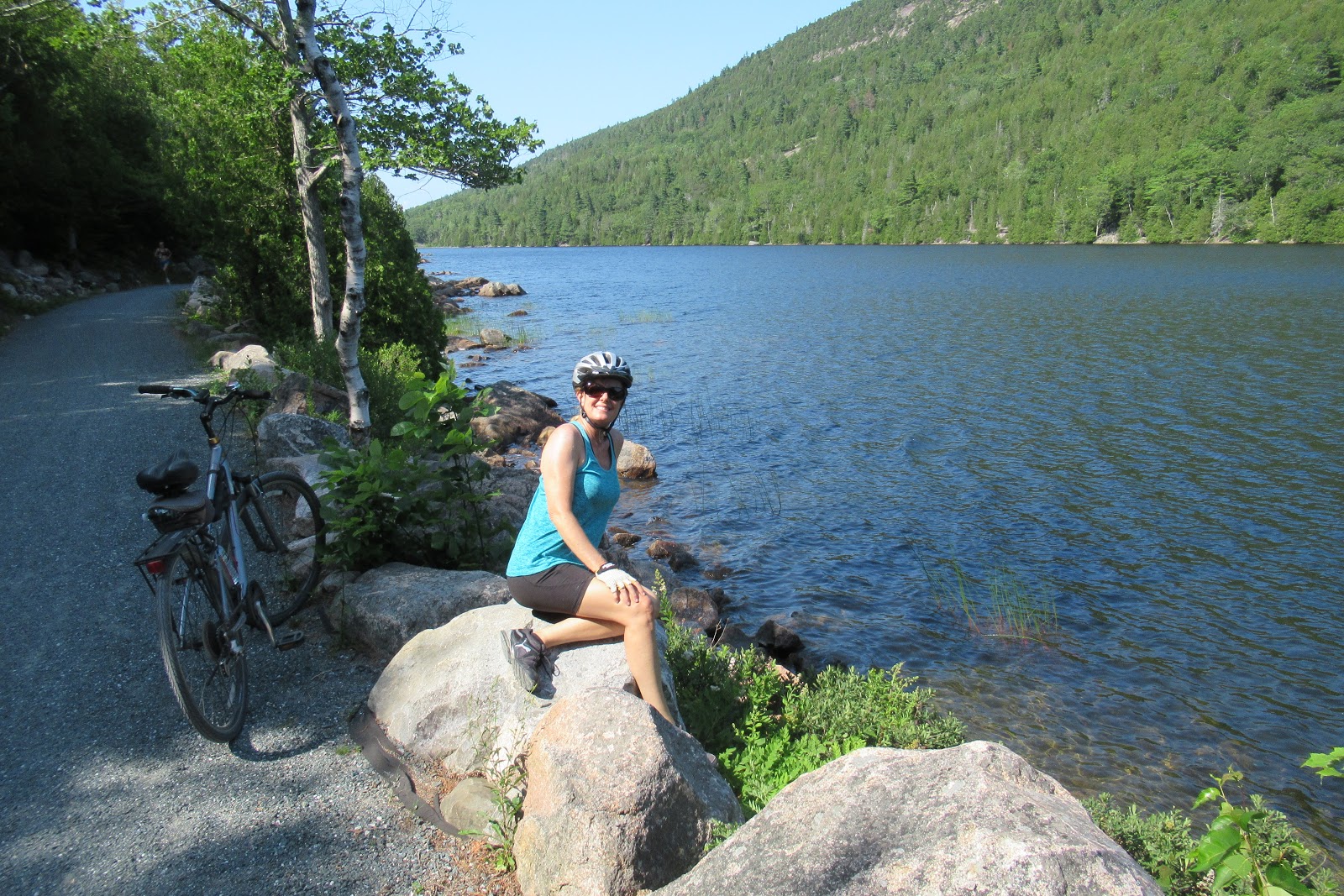
Jagged granite stones along the carriage roads act as guard rails; they are called “Rockefeller’s Teeth.” When you are super-wealthy, apparently even your teeth get something named after them. I looked around for Rockefeller’s Appendix, but didn’t find that.
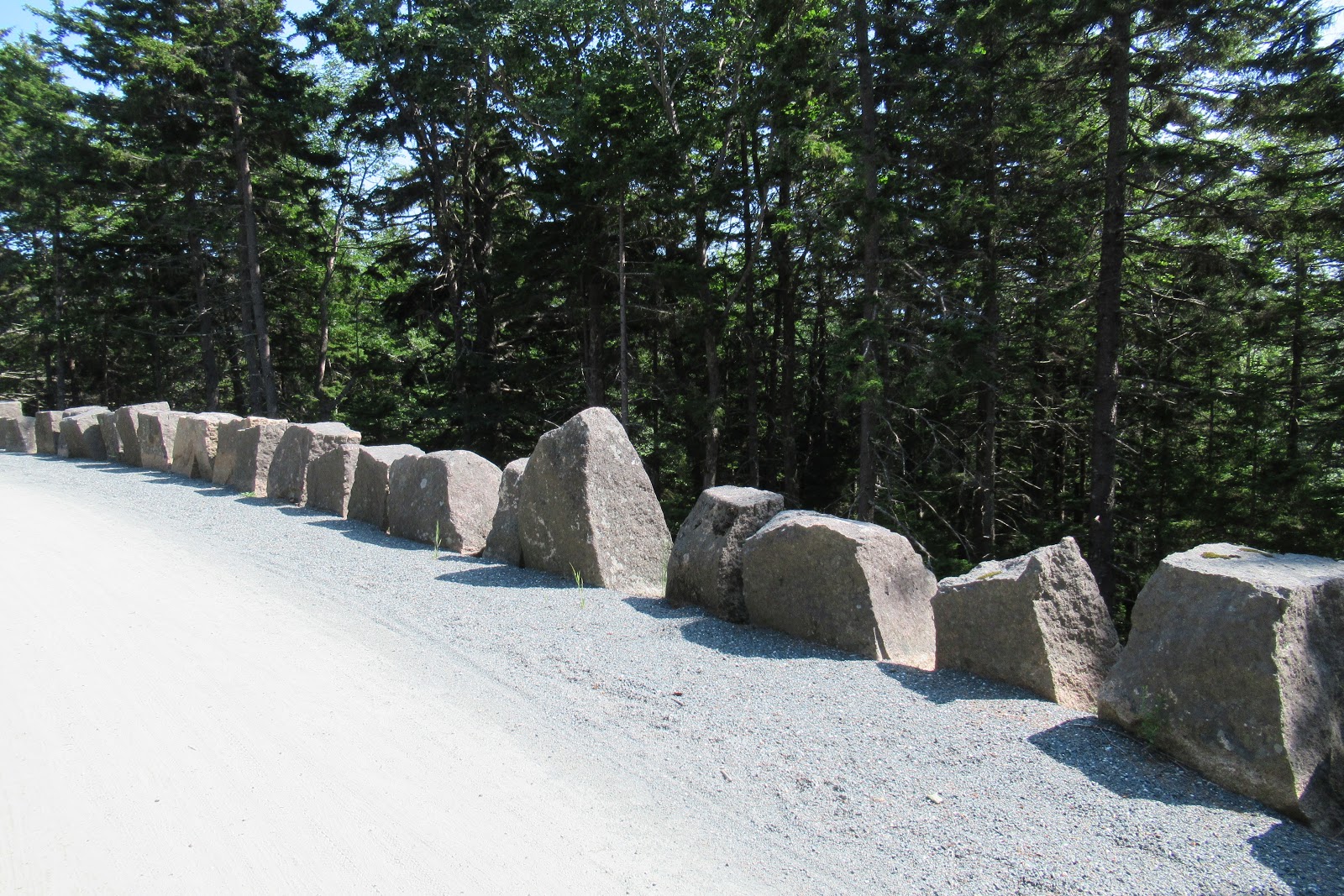
Two gate lodges, one at Jordan Pond and the other near Northeast Harbor, ornament the road and welcome visitors to the carriage road system. Back in the day, “welcoming” meant “keeping you out” if you were in a horseless carriage, a.k.a. automobile. Though the gatekeeper is no more, the gorgeous stonework remains.

Rockefeller also financed 16 stone-faced bridges throughout the park. An accomplished road builder, he participated closely in their design and construction.
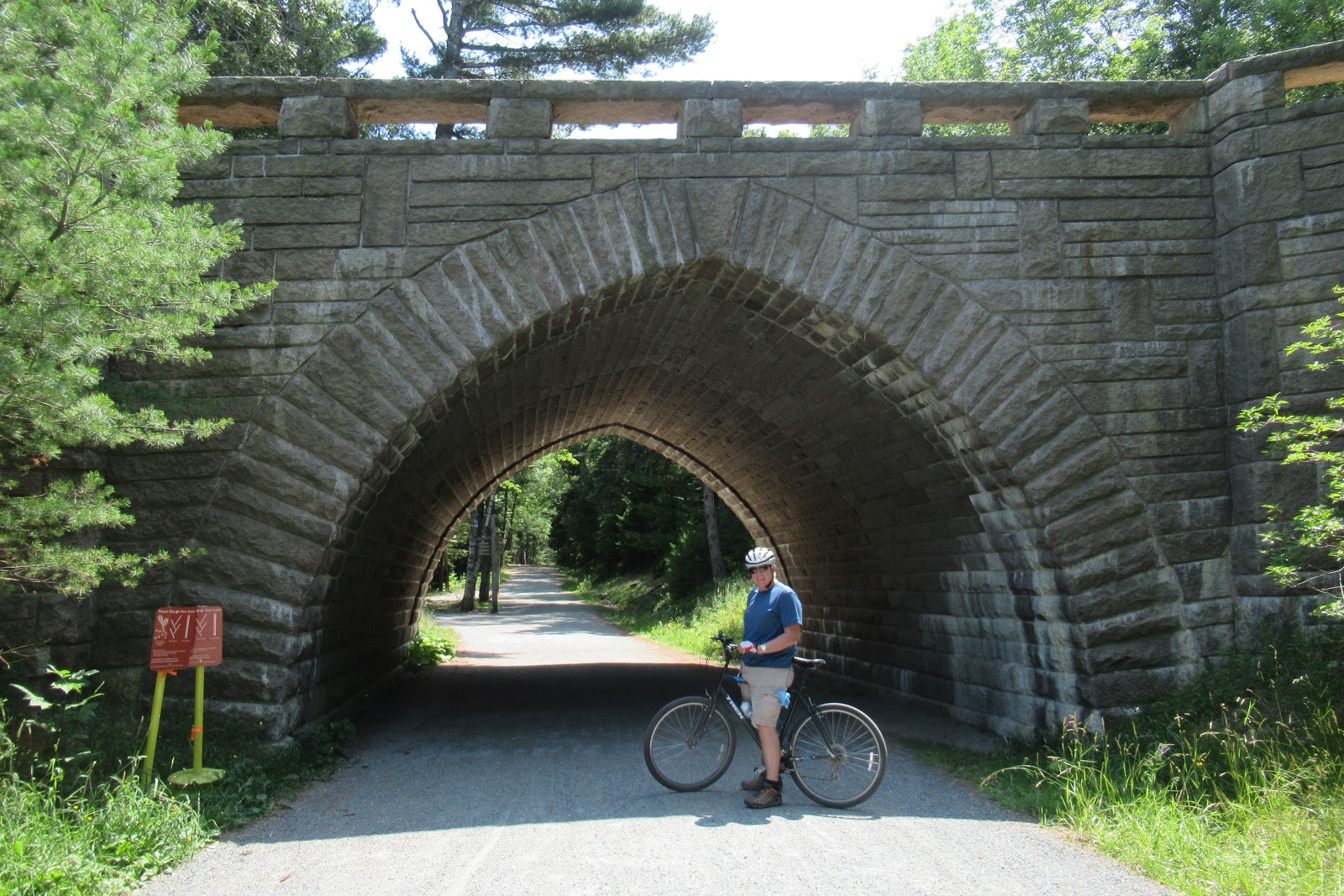
Into hiking? With 7 peaks above 1,000 feet, and 158 miles of hiking trails, Acadia is your jam! The #1 most popular trail in all of Acadia, the “Beehive Trail,” is known for its scary/exciting features of sheer cliffs, iron rungs, and climbing ladders, up up up!
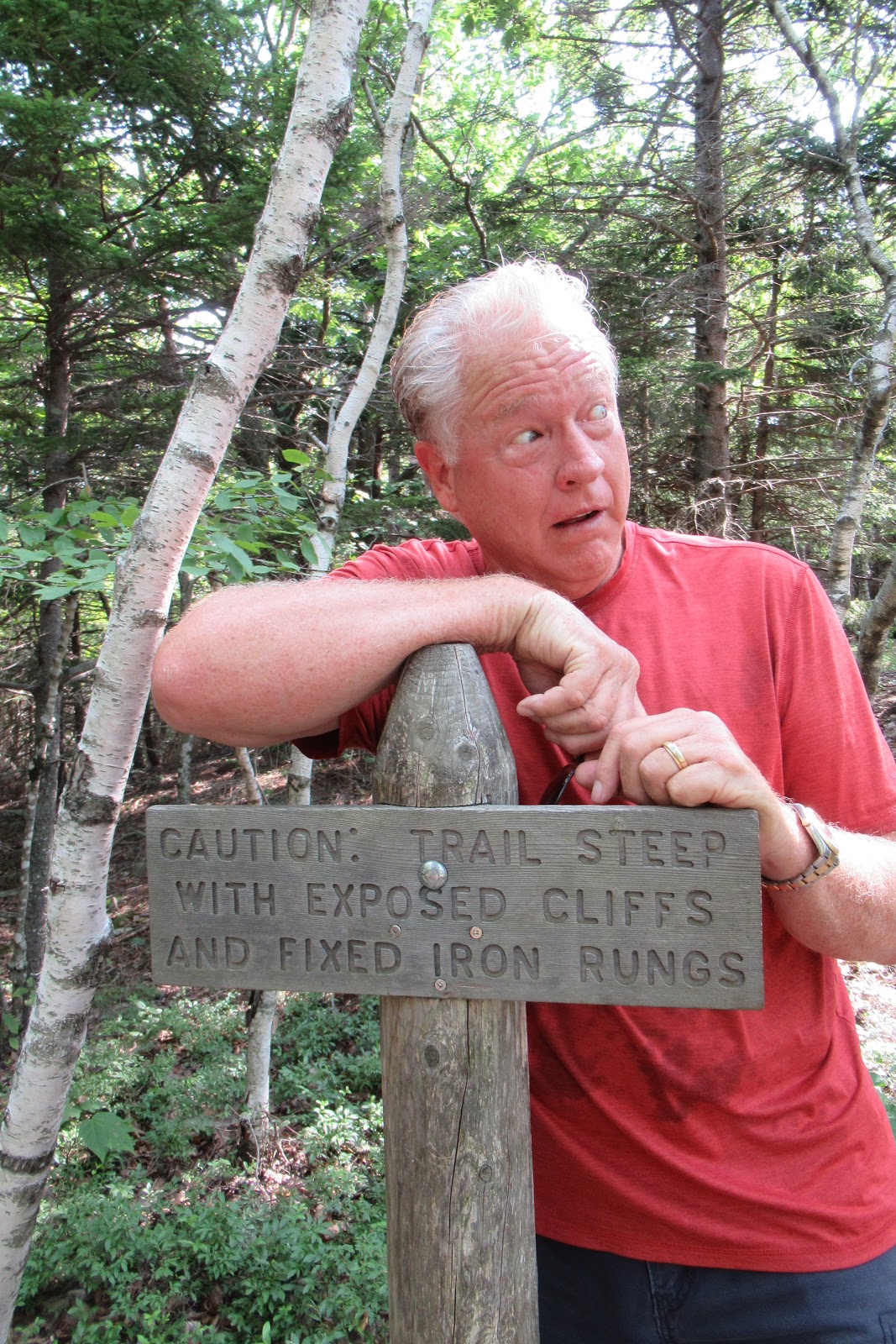
Some of the passages are so narrow, they had to add flat railings to allow you to pass.
Not pictured, a one-way ticket down on the Gravity Express to certain death below.
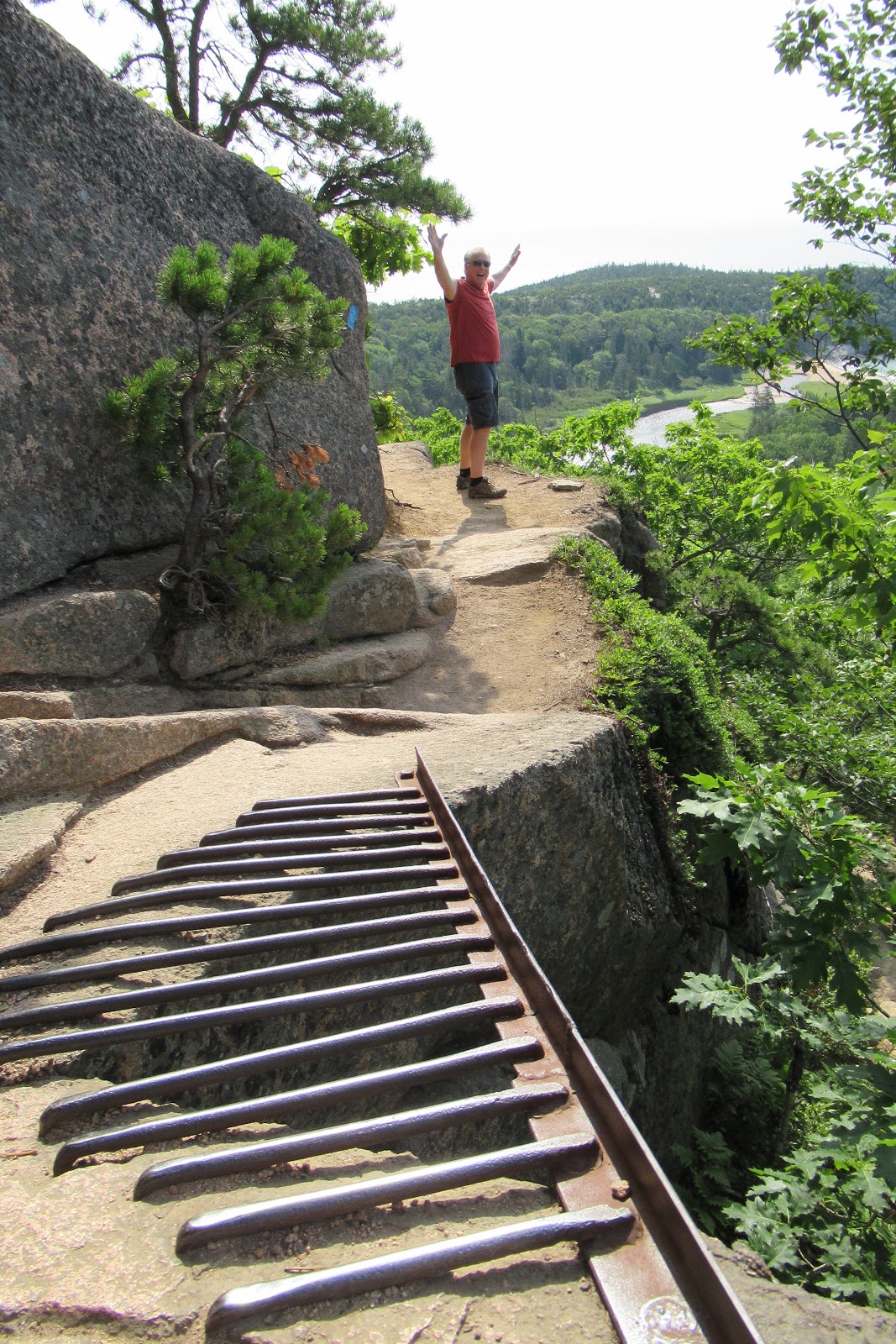
The rungs are sturdy, but the mind plays tricks! Even without fear of heights, it was freaky!
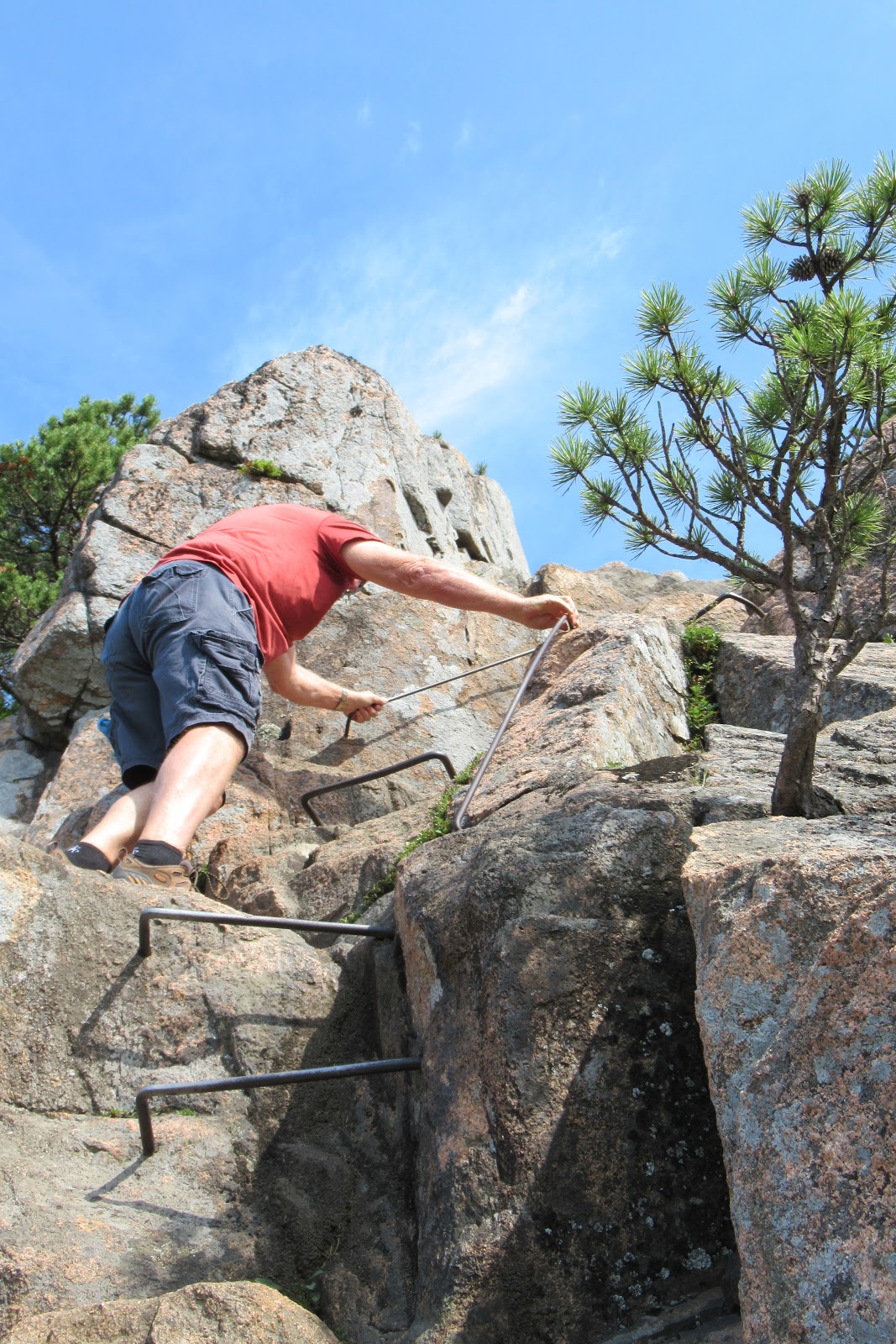
While hiking other more “normal” (but no less strenuous trails) …
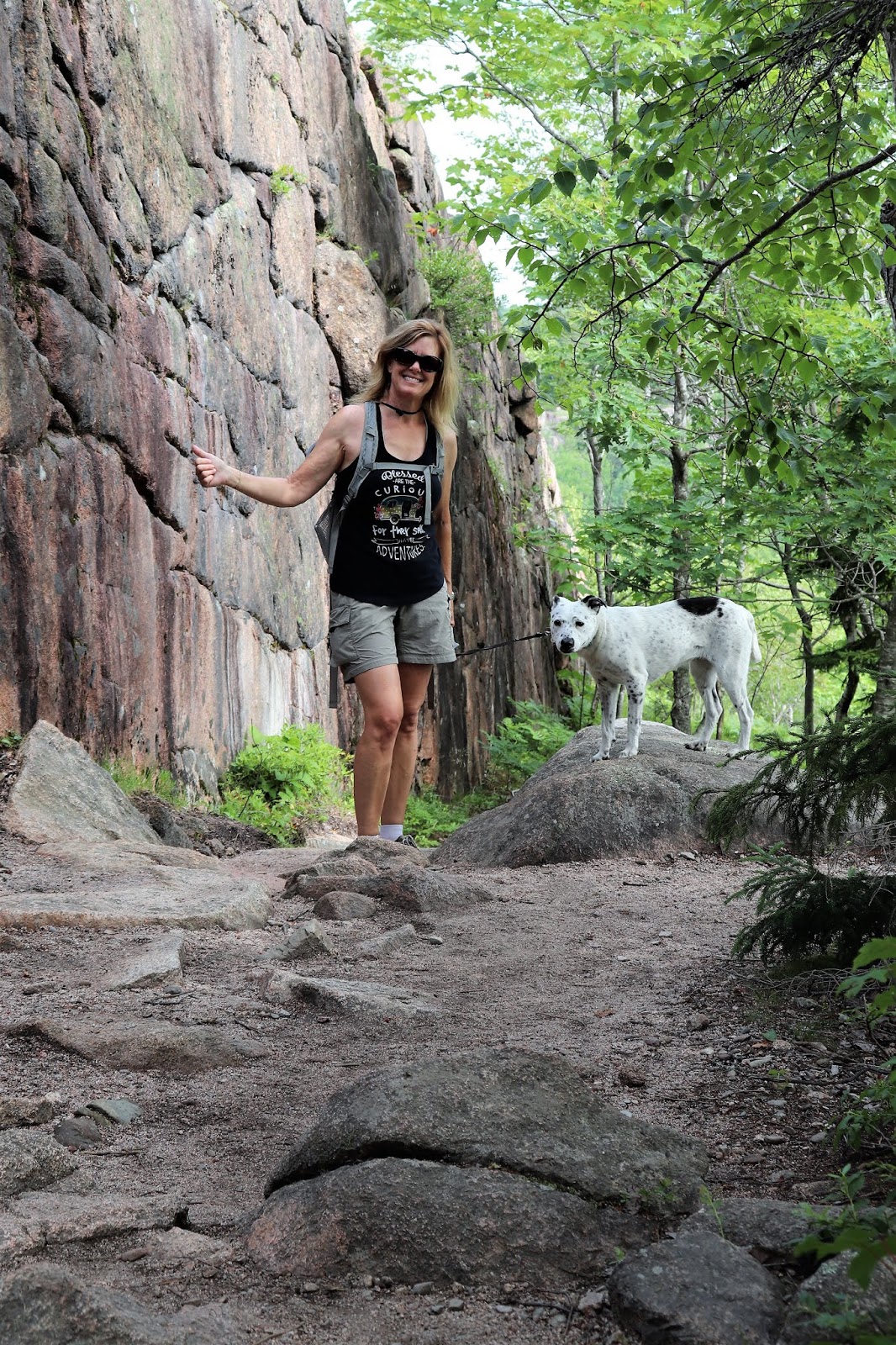

we learned something new! We’d always seen “cairns,” which are rock piles left behind by hikers, frequently at the start or the end of a trail, or to mark a turn. But here we learned of a specific kind of cairn called a “Bates Cairn,” which is meant to send you in a specific direction! The rock on the top, as well as the space between the bottom two rocks (presumably in case the top rock gets knocked off), point you in the correct direction! And now you know!
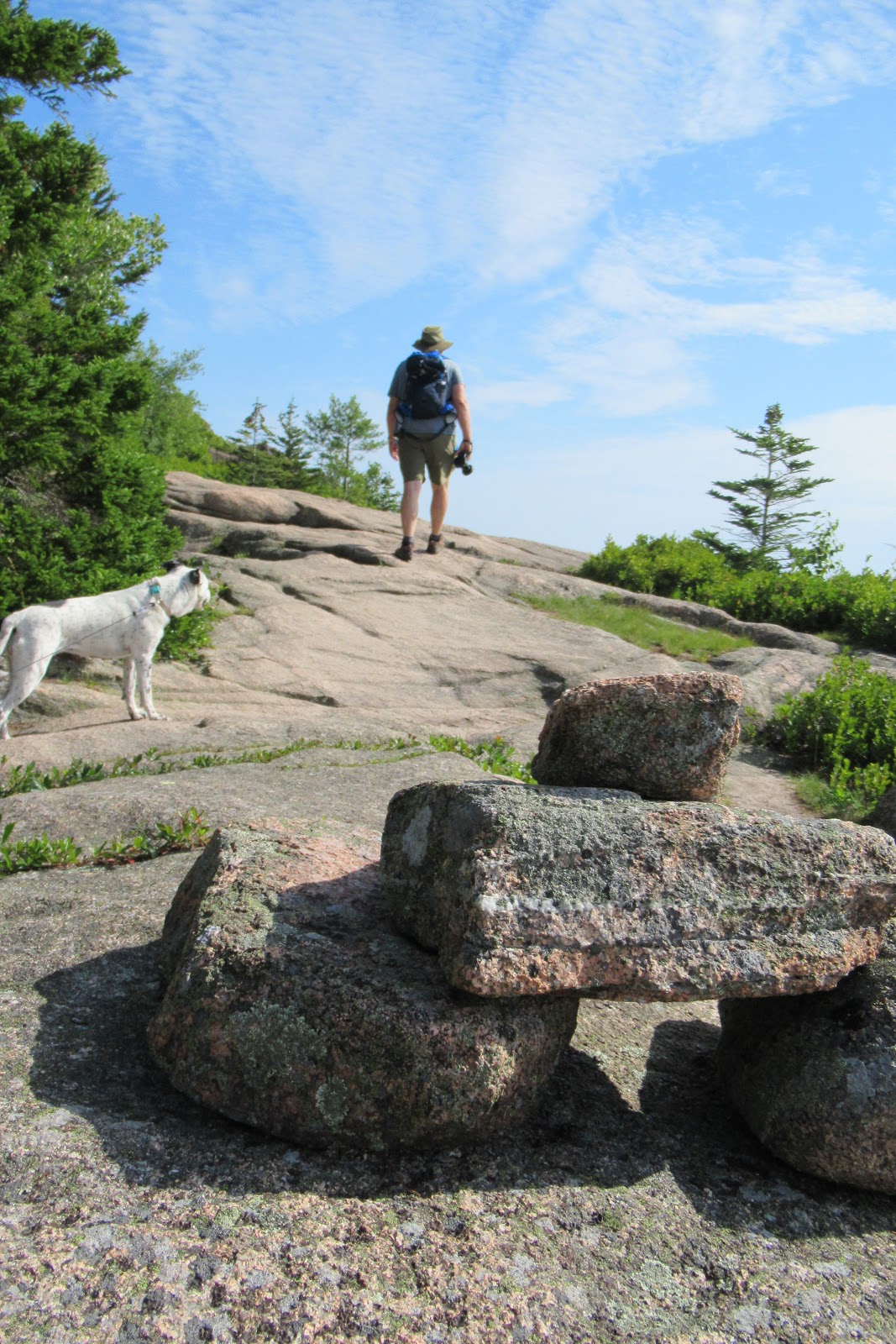
The must-do activity in Acadia is a drive (or hike) to the tippy-top of Cadillac Mountain, the highest point on the Atlantic Seaboard at 1,530′ elevation. The cool kids all come here before sunrise to catch the first light of the day in the perfect Insta-worthy photo, but since (1) we are not cool kids, and (2) sunrise is at 4:30 AM this time of year, obviously that wasn’t going to happen. High noon is just fine!
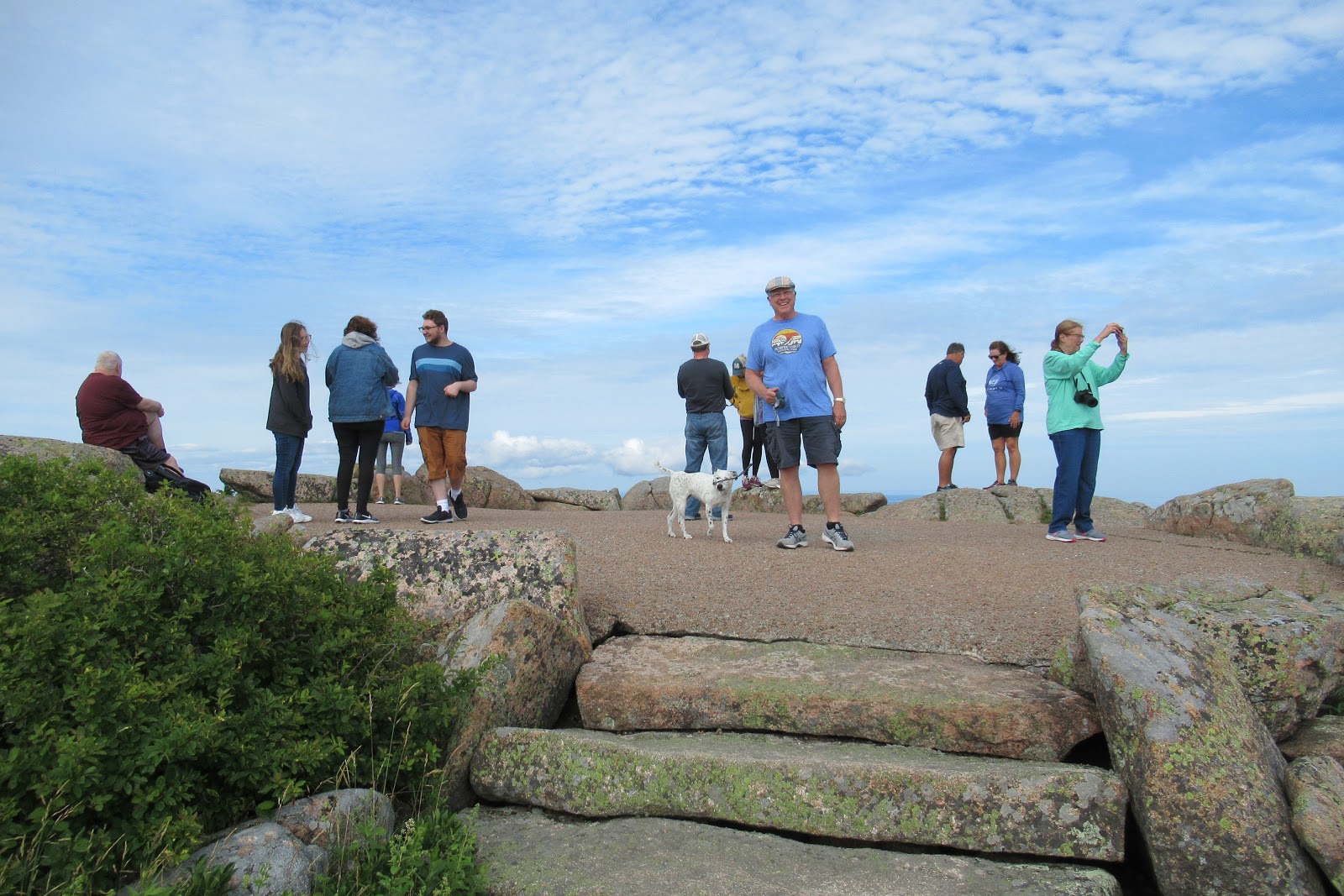
Another popular stop is Jordan Pond, with its clear, glassy water.

Here, you can partake in an idyllic afternoon tea with their famous popovers, just like they’ve been doing here since 1895.
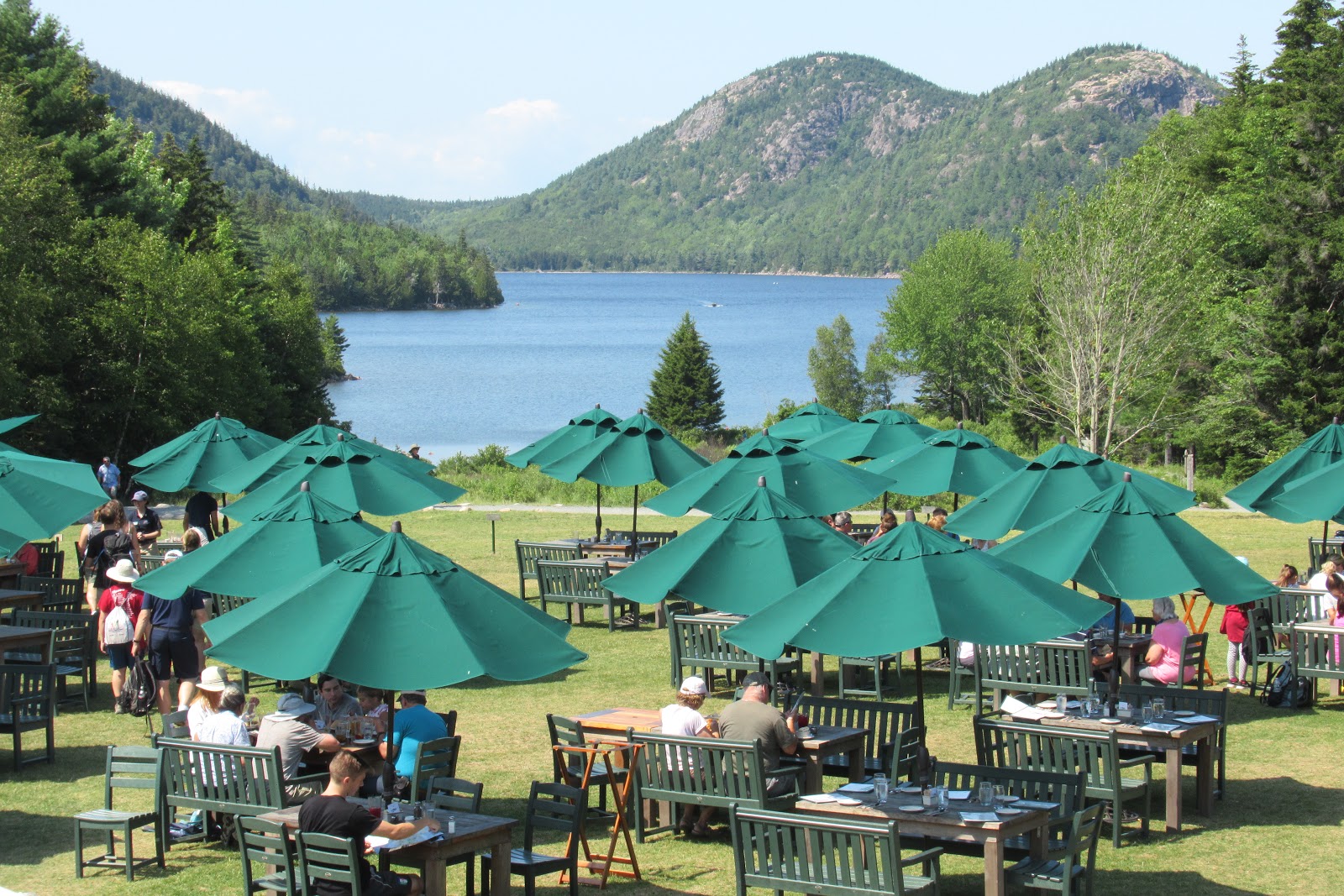
From here, a gorgeous view of “The Bubbles,” glacially-created formations from eons ago.
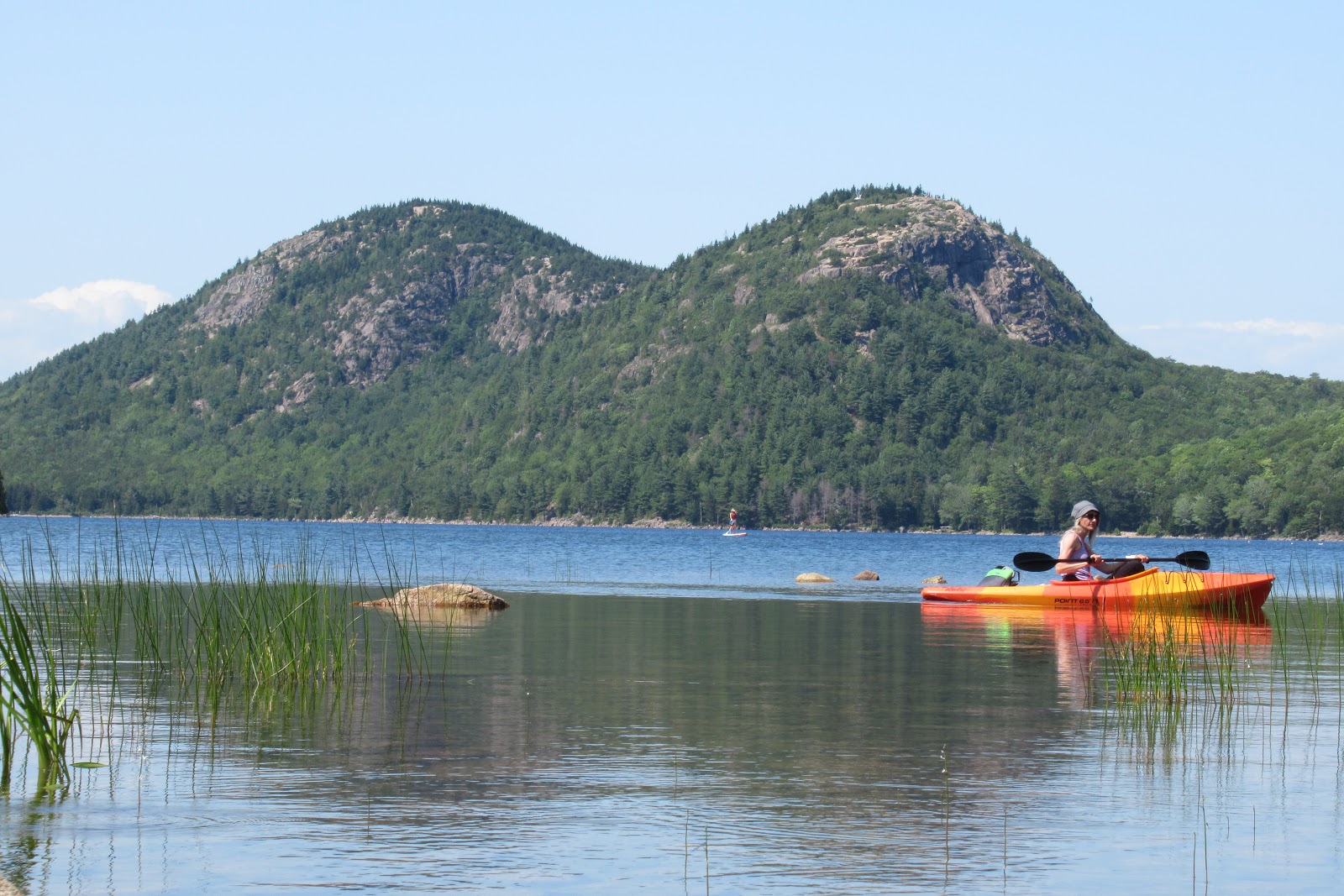
Though the park itself is large, the majority of the 3.5 million visitors per year can be found clustered at just a few places, primarily along the Ocean Path Trail, a 1.8 mile path that leads from Sand Beach, to Thunder Hole, to Otter Cliffs. See them scattered like fire ants all over the cliffs?
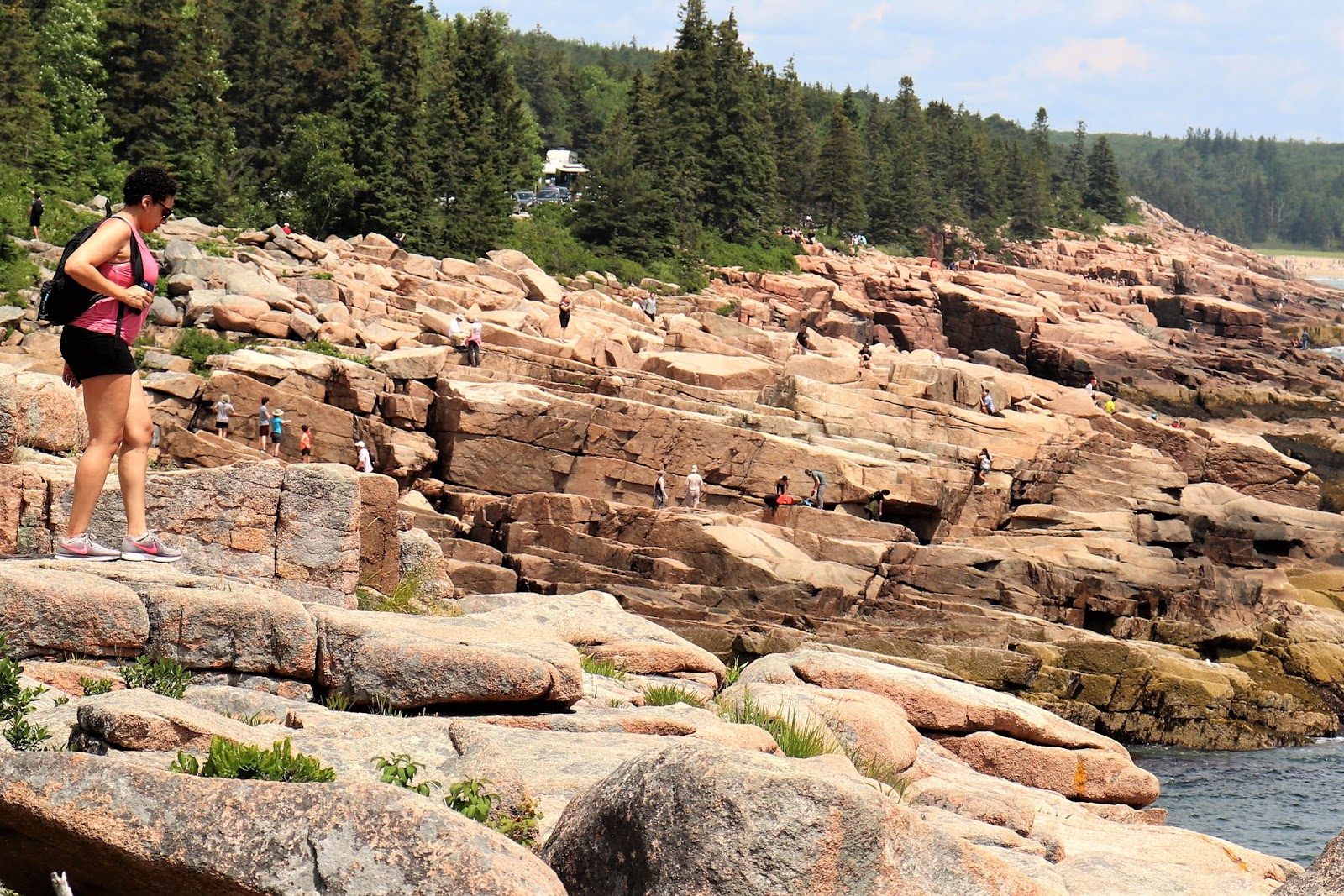
Sand Beach, one of the few sandy swimming spots in Maine, is tucked amongst forests and mountains, where the water barely reaches 55 degrees on the warmest day.
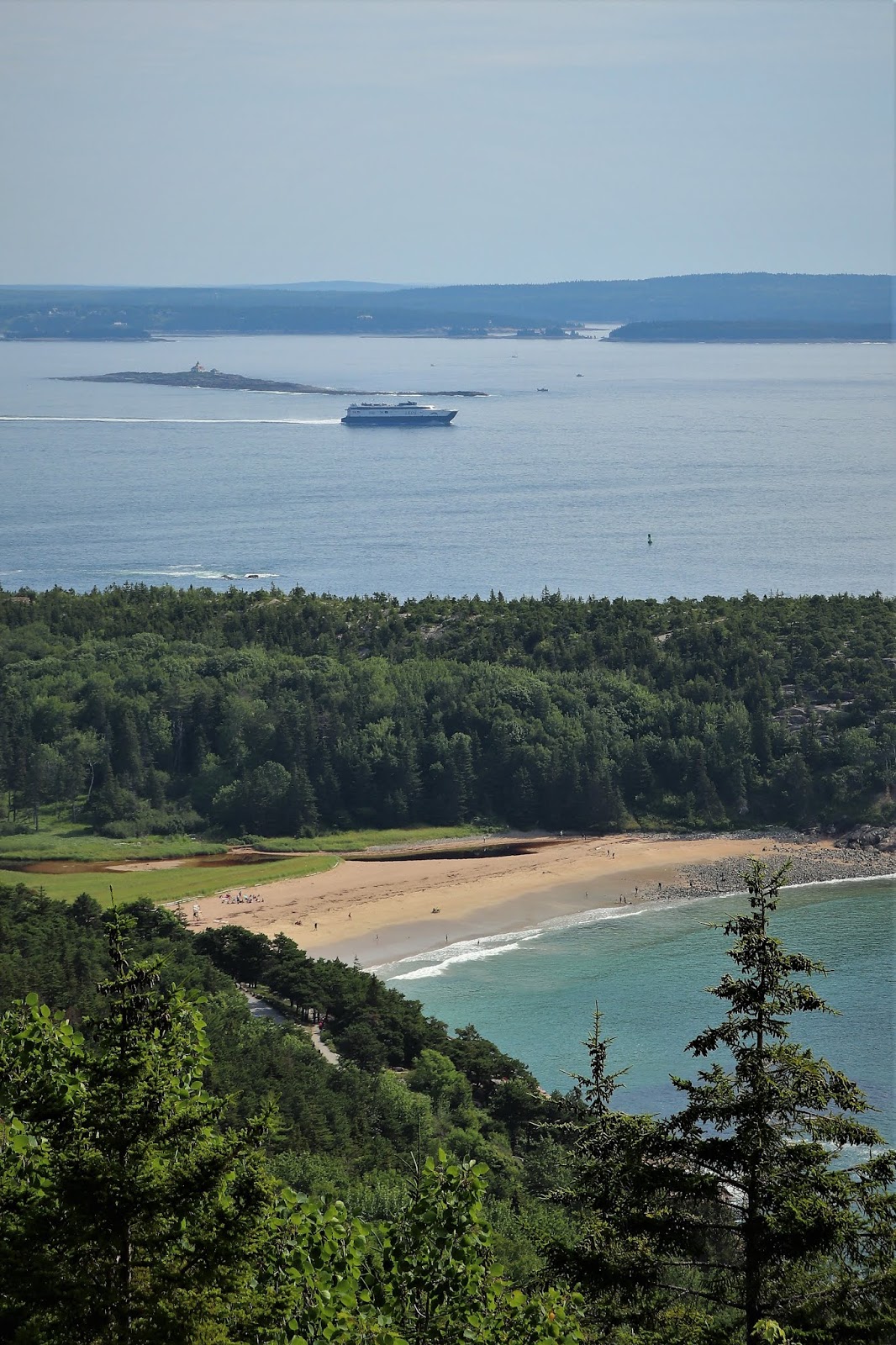
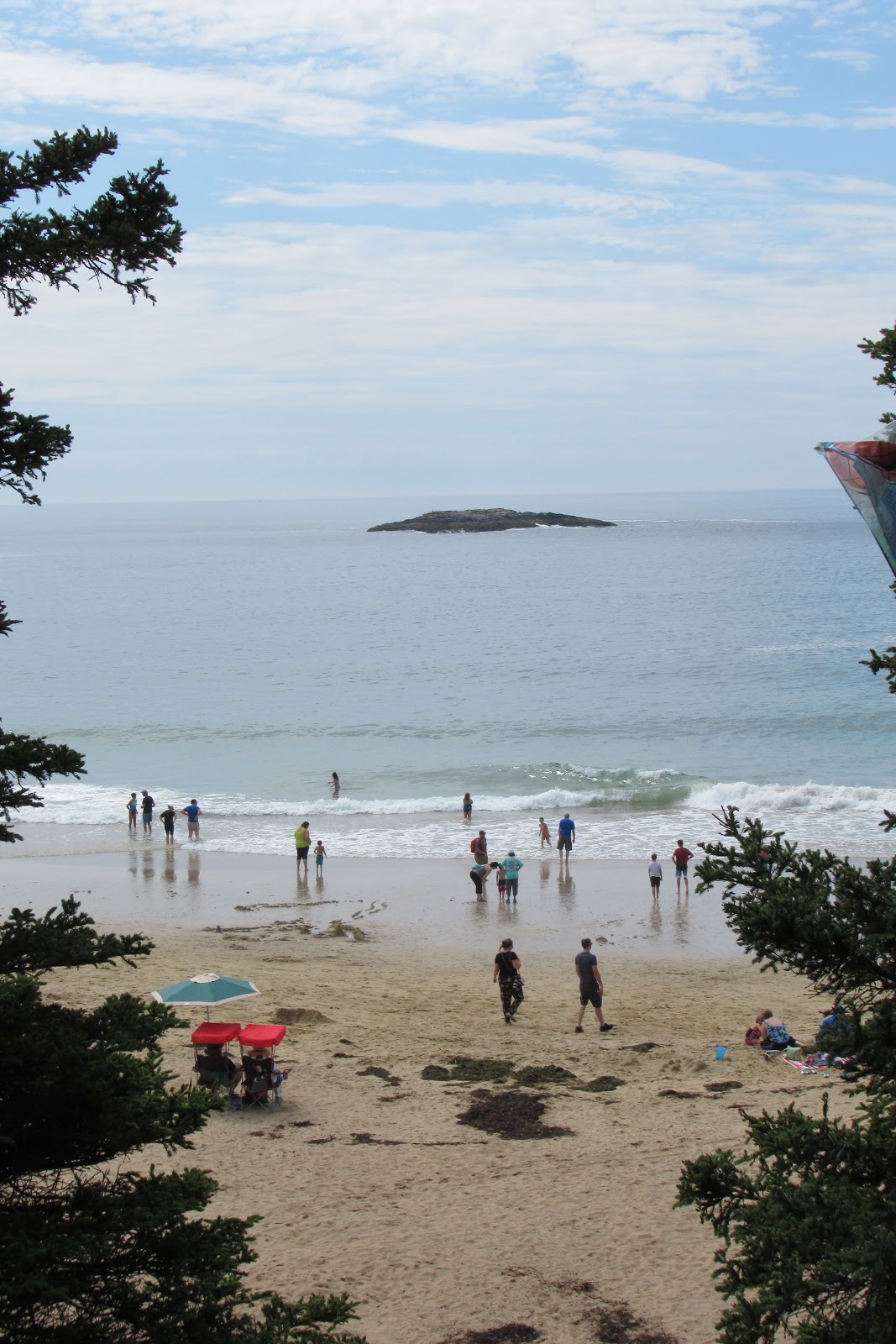
Thunder Hole is an ocean-side cavern where at certain times of the day (usually about 1 hour before high tide), big waves rush into a tiny cave, making an incredible roaring sound and splashing water up to 40 feet in the air and all over these people standing here waiting. At low tide, it is stubbornly silent but at least you’re not gonna need a towel.
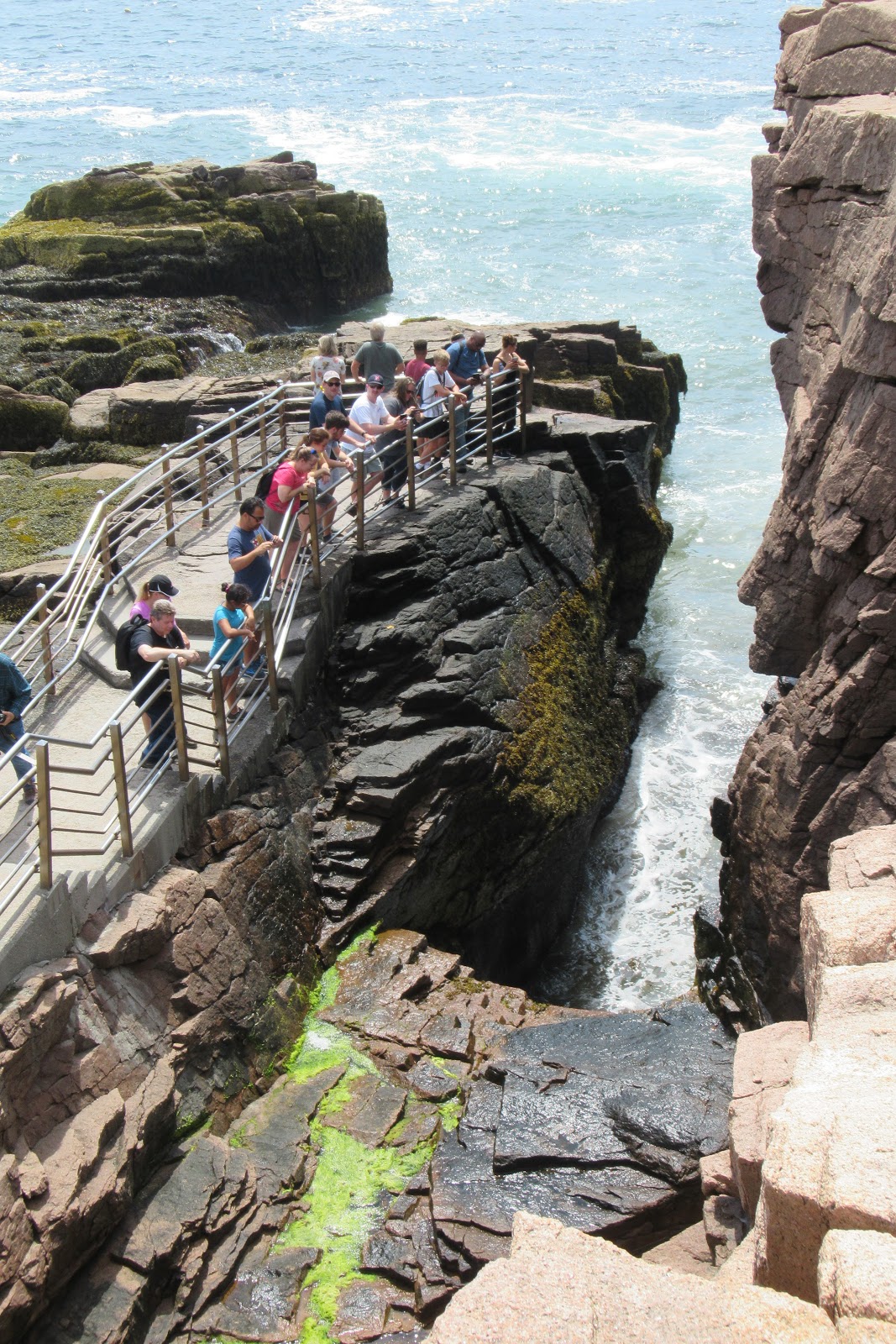
Otter Cliffs’ 100-foot tall granite rocks rising straight out of the water, are popular for rock climbing.
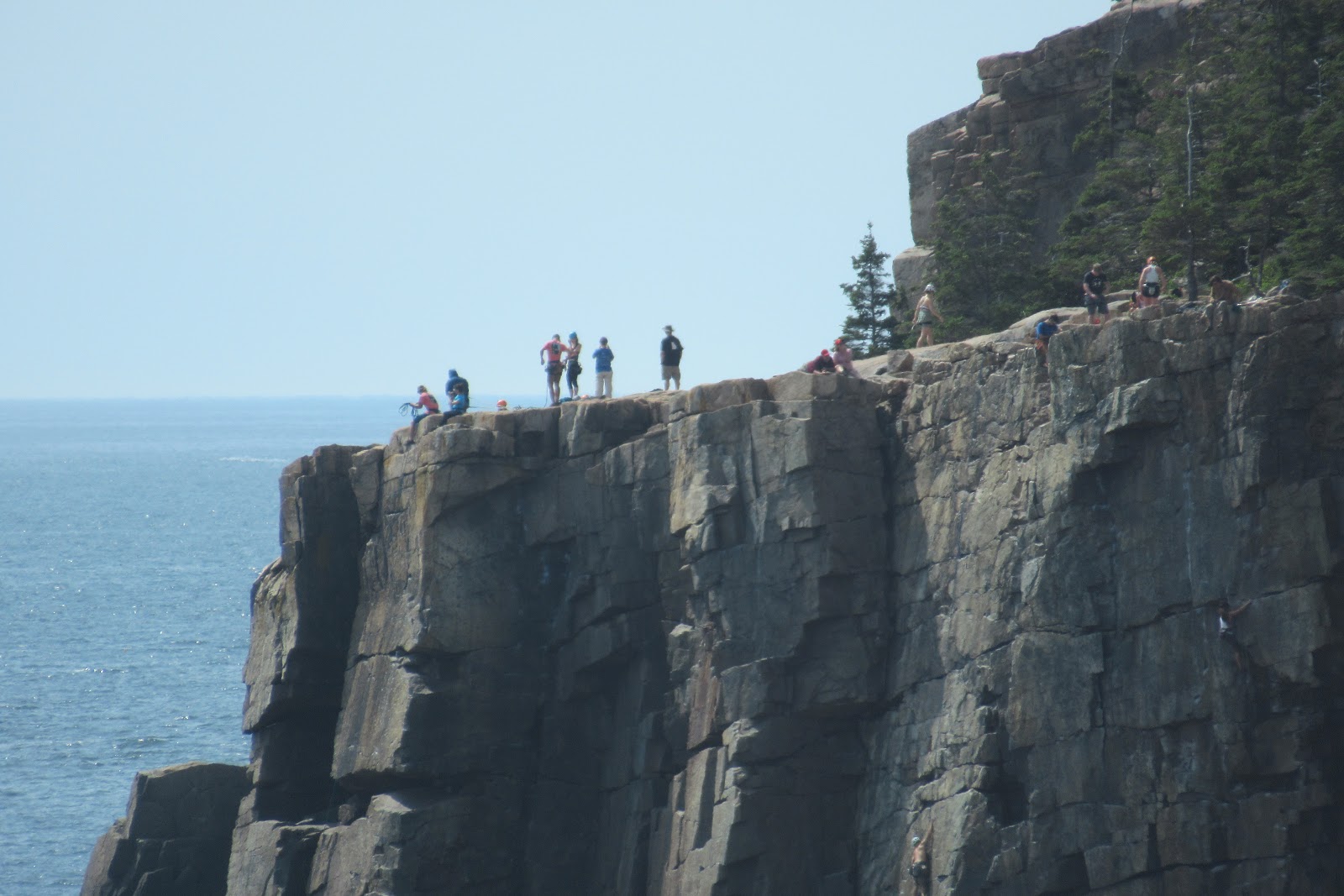
And perfect for sunning and picnicking! It’s hard to tell in this photo, but we are REALLY high up above the water!
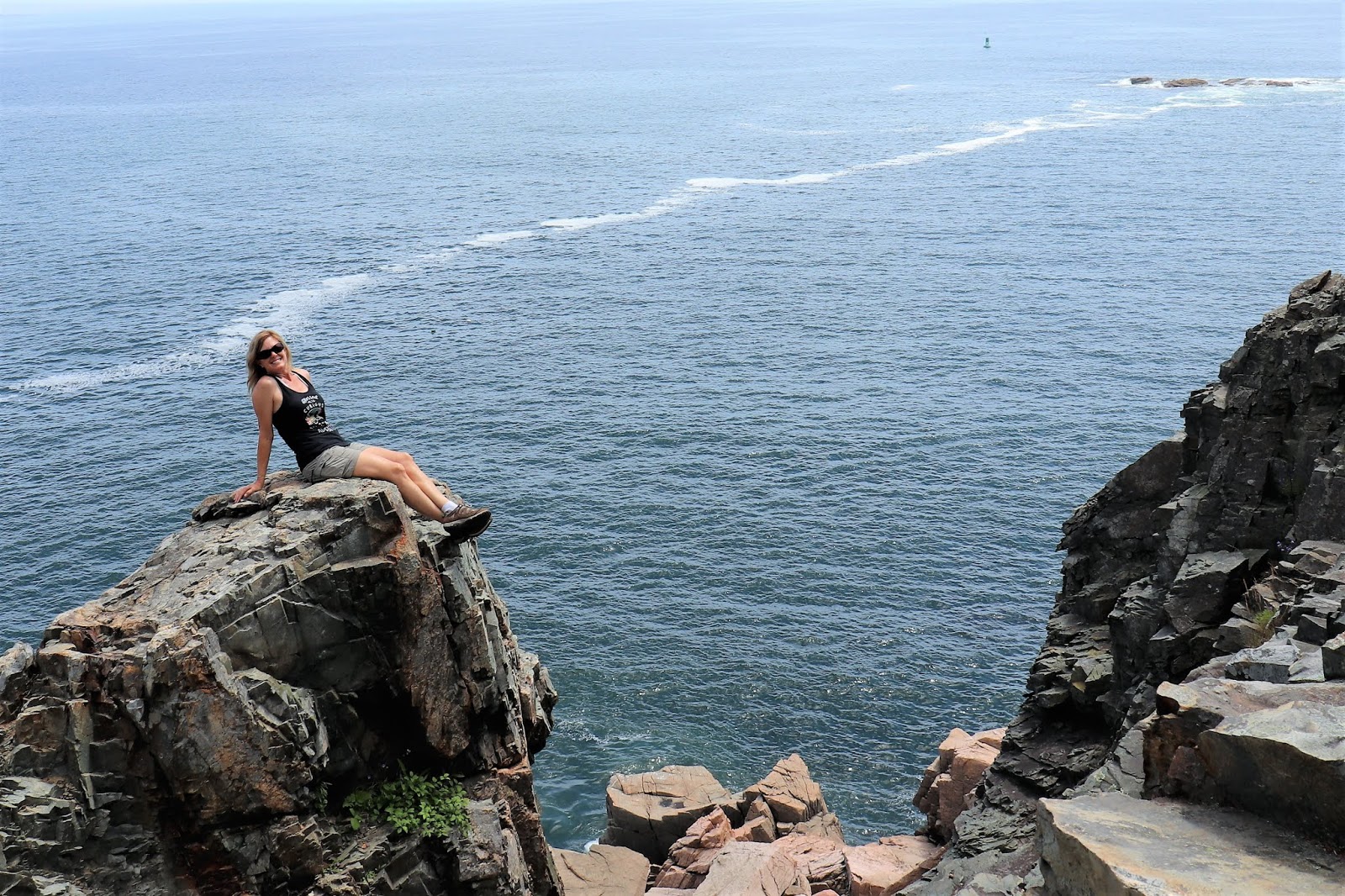
When ya just gotta get away from hordes of people, driving to the Southwest Harbor area is just the ticket. Here, along the Seawall, you can have the entire shore, and the entire wave, all to yourself!
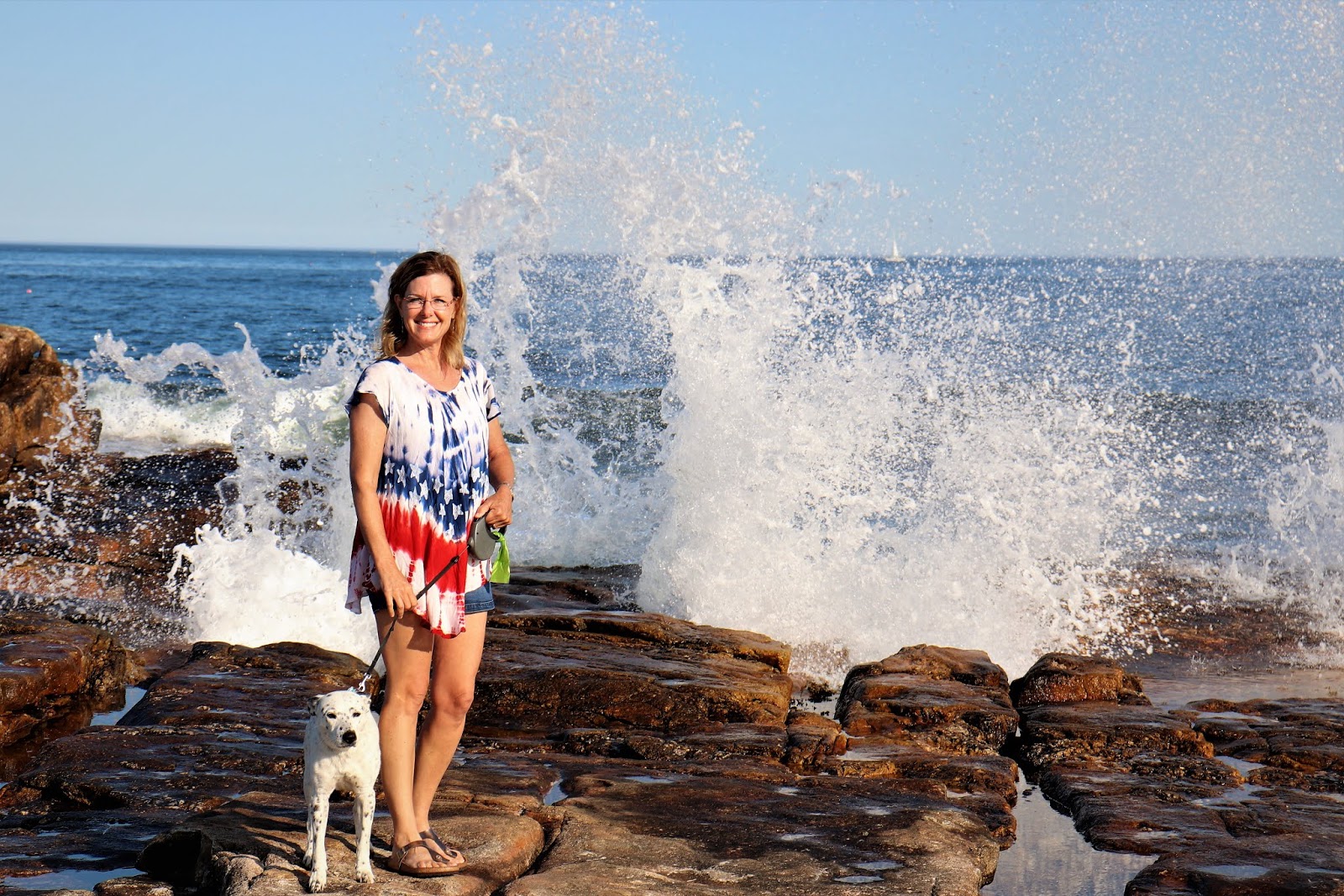
Today about 50% of Mount Desert Island remains privately owned. Many of the homes in this area are very old but retain a humble, dignified charm. Here, the Stone Barn Farmhouse, dated 1820.
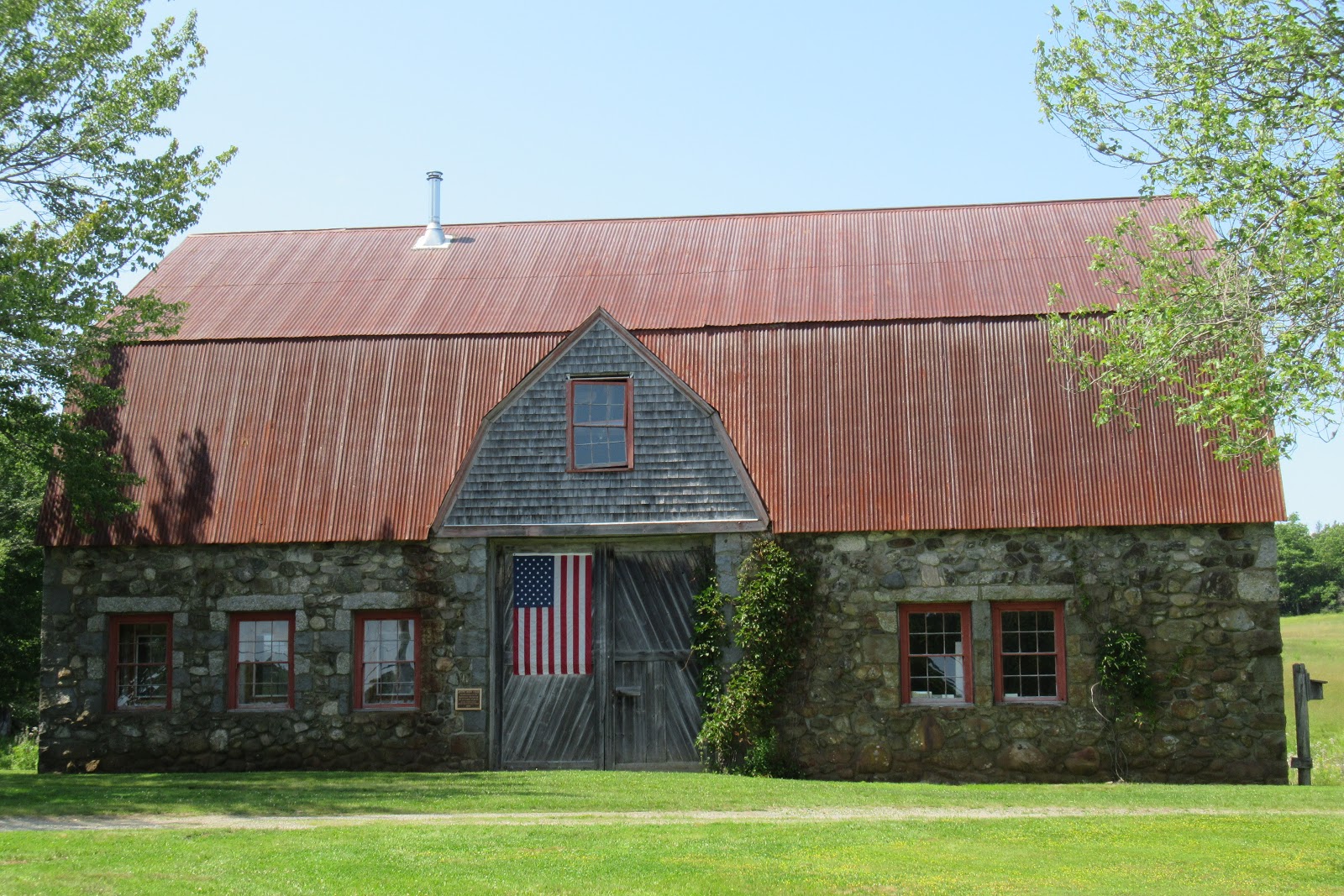
And of course, it’s just not the seashore without a lighthouse … or two … or hundreds! In Acadia, the lovely Bass Head Lighthouse shines her light for all to see.
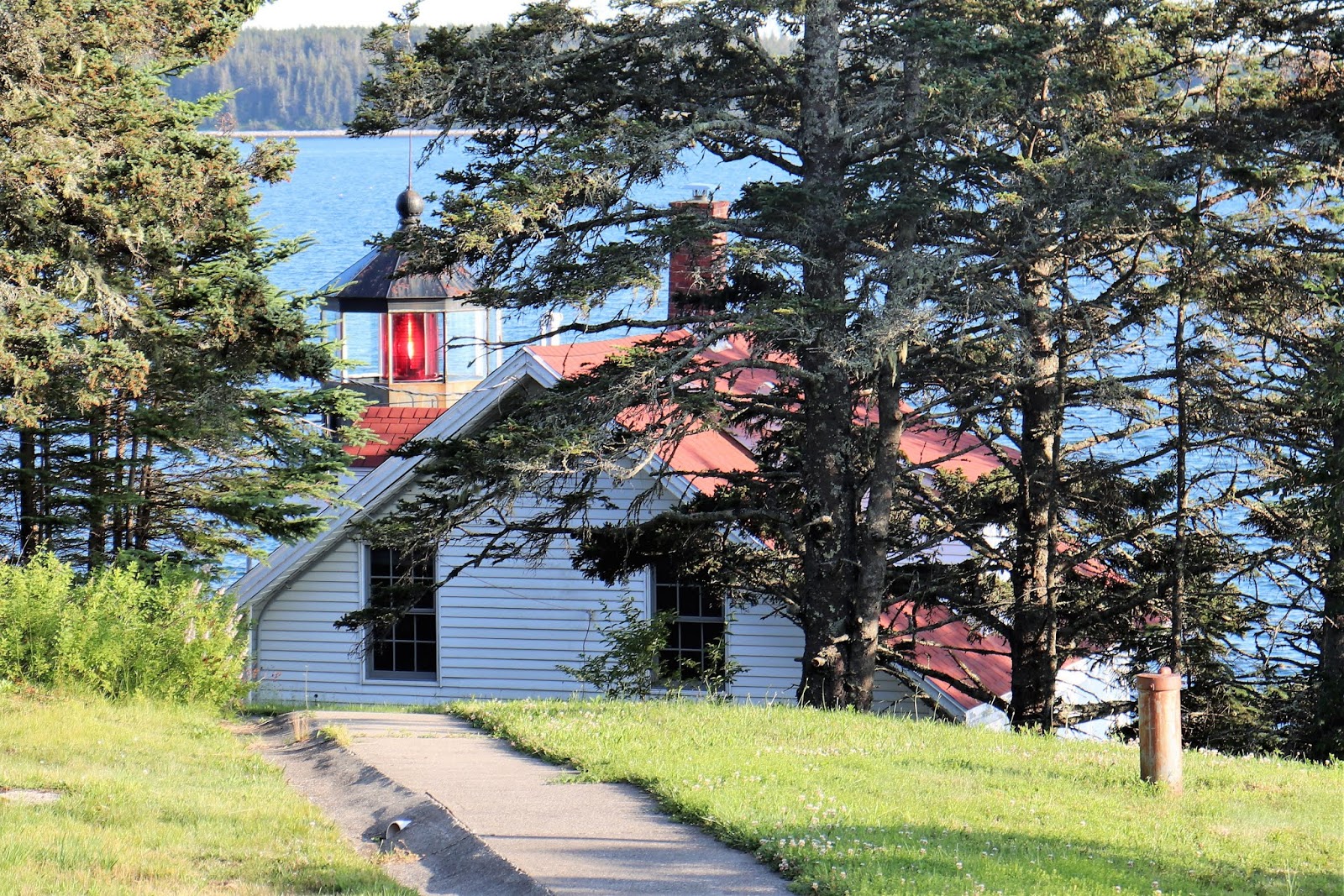
The age-old question … is it better to be a big fish in a small pond, or a small fish in a big pond?
Here, yachts and dinghies coexist in beautiful harmony.
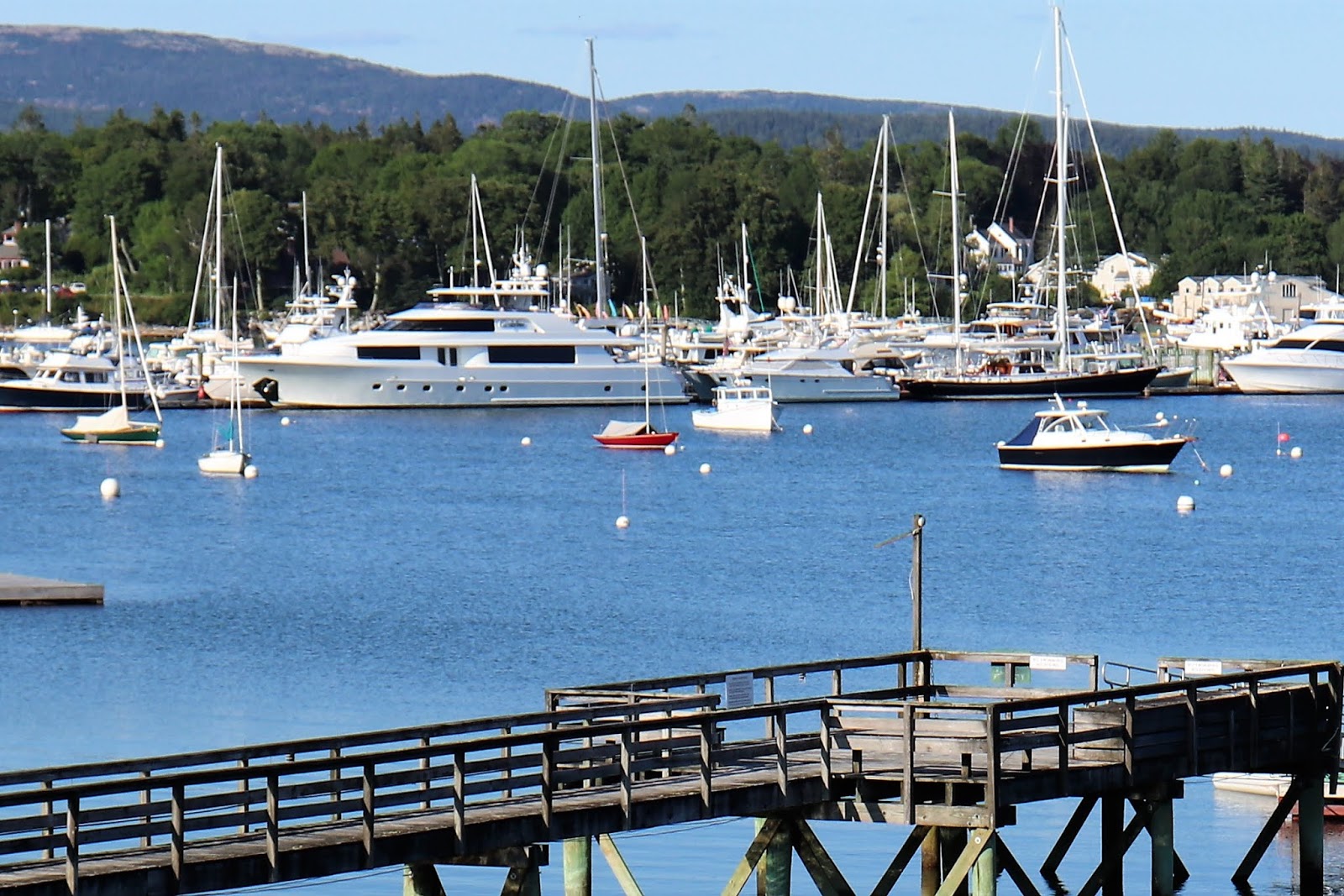
On the “quiet side” of Acadia National Park, the 2,366-acre Schoodic Peninsula is a 30-mile drive away. Here, life is quieter and the fishing and trapping heritage of its longtime residents is honored and celebrated.

Everywhere, the colorful reminders of this seaside life.

Maine’s gastro-specialties include wild blueberry pie, cherrystone clams, baked beans and more, but most importantly … LOBSTER! Even Acadia National Park is itself shaped like a lobster claw. Each of those specks on the water are one of the thousands of lobster traps working hard for our dinner.

Maine’s lobster is so famous it’s on their license plate, even though the motto of the state is “Vacationland.”



Lobster was not always considered a luxury delicacy. Early settlers used lobsters as fertilizer, and prison inmates used to complain about having to dine on lobster three times a week. Lobstermen use box-shaped wire traps, dropped to the ocean floor and checked frequently.

It takes seven years for a lobster to reach its legal catch size. Most weigh about 1.5 pounds, but some are as large as 40 pounds! The traps are marked with brightly painted buoys, and each lobsterman has a distinctive color pattern which has to be registered with the state.

A “lobster pound” is technically a large enclosure with circulating water in which live lobsters are kept, while awaiting their purchase and subsequent fate. Here, it also refers to a lobster restaurant, usually extremely casual and usually with outside seating.
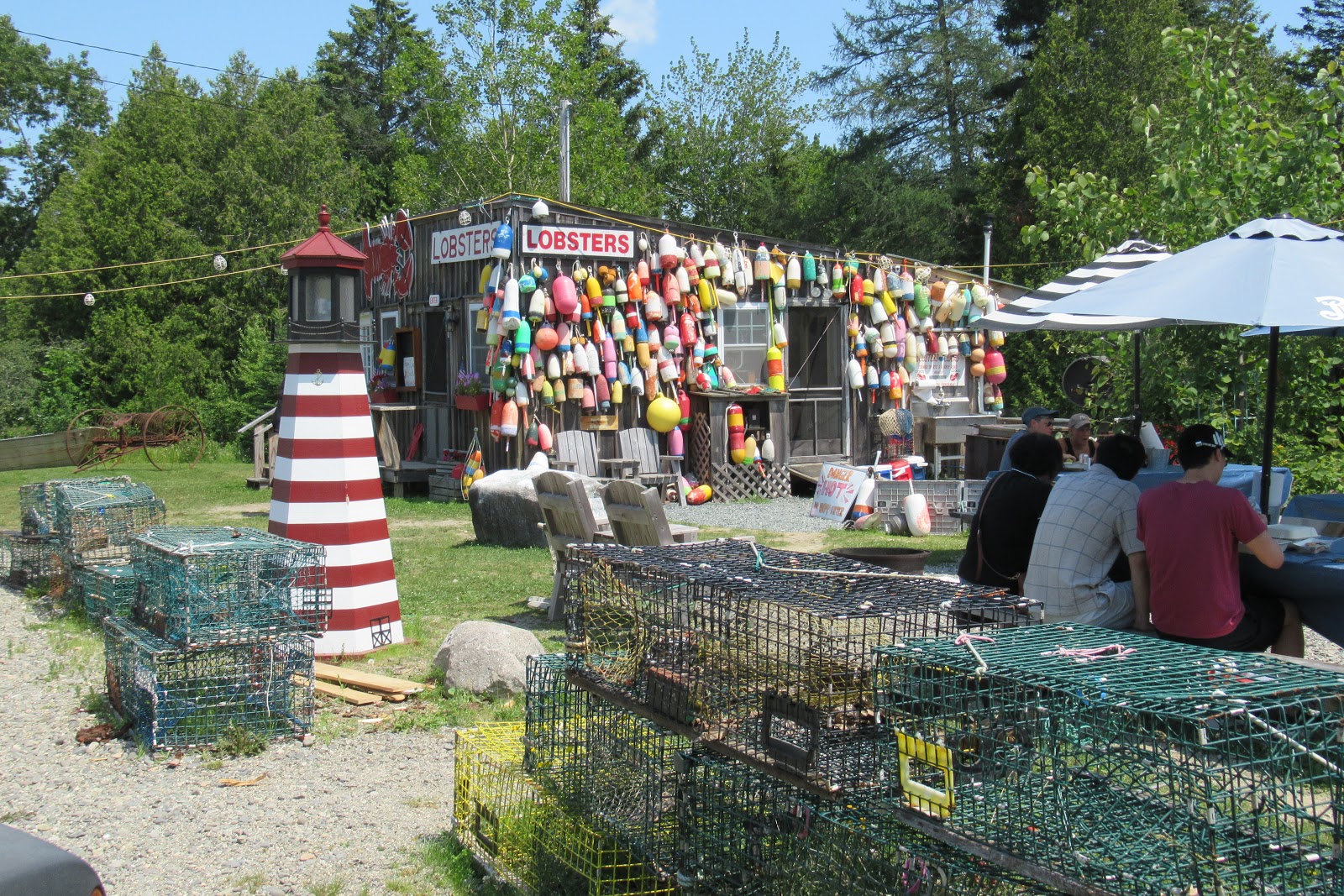
All ya gotta do is look for huge clouds of billowing steam. Congrats … you’ve found a lobster pound!
Pick your lobbie, and they’ll drop him in one of these cauldrons for your meal. Don’t wanna do the work of extracting the meat from the shell? Order a “Lazy Lobster” and they’ll do it for you!
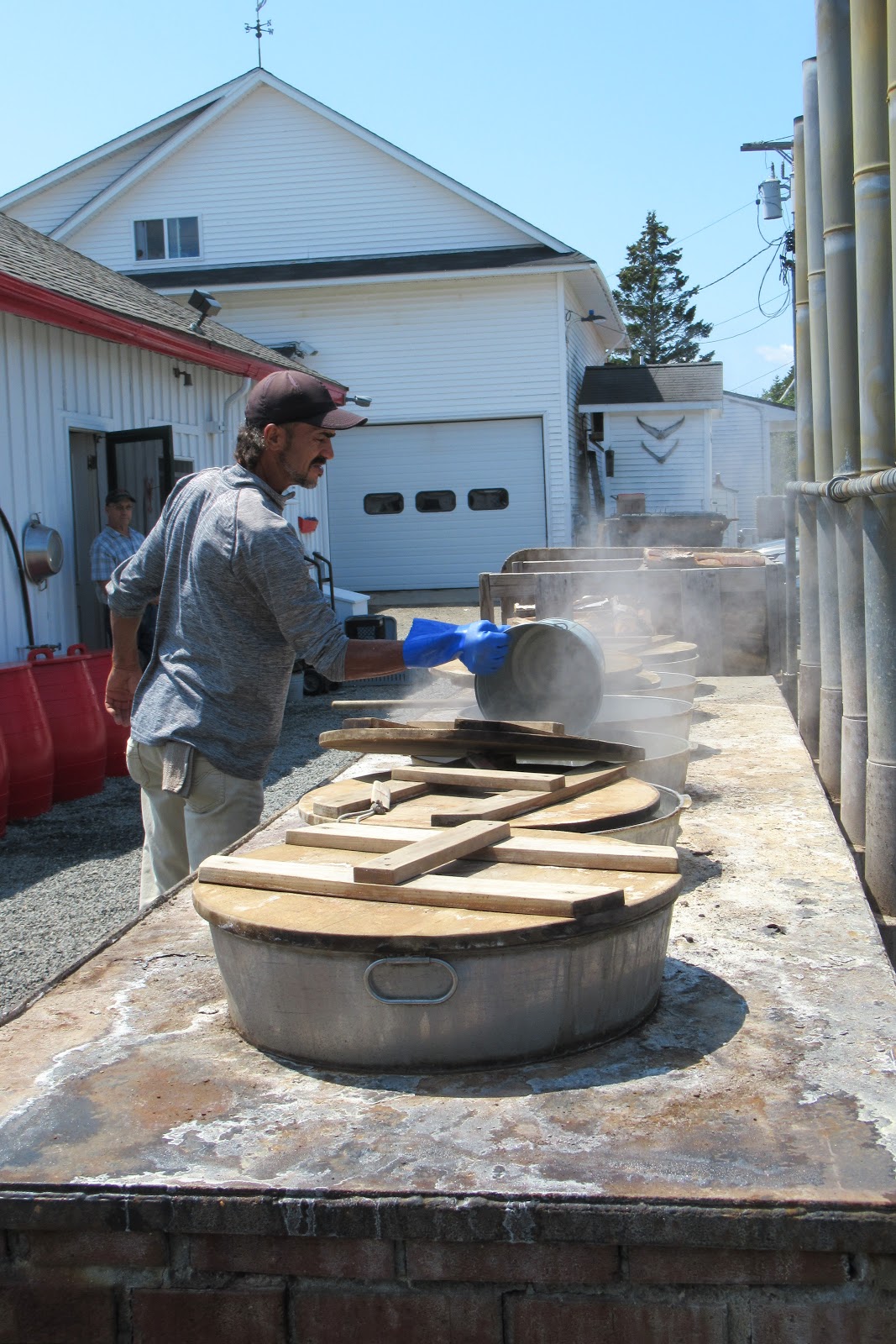
With plenty of shopping in nearby Bar Harbor, even Sprinkles gets new attire … a lobster-print collar bow!

When you finally get sick of lobster, not to worry! A dozen other fresh choices await….. all of it a freshly-pulled harvest from the sea every day.

The oddly-named “Pickled Wrinkle” restaurant refers to their specialty … literally, pickled wrinkles!
What the heck is THAT?

Wrinkles are carnivorous sea snails, also called whelks. In tough times of yesterday, wrinkles were the item that kept hungry Maine families alive, like potatoes to Irishmen during the potato famine, and when pickled they can last even longer. Today, they are a delicacy! (Philip’s assessment … “chewy and fishy.” Also, $7 for 3 of ’em.)
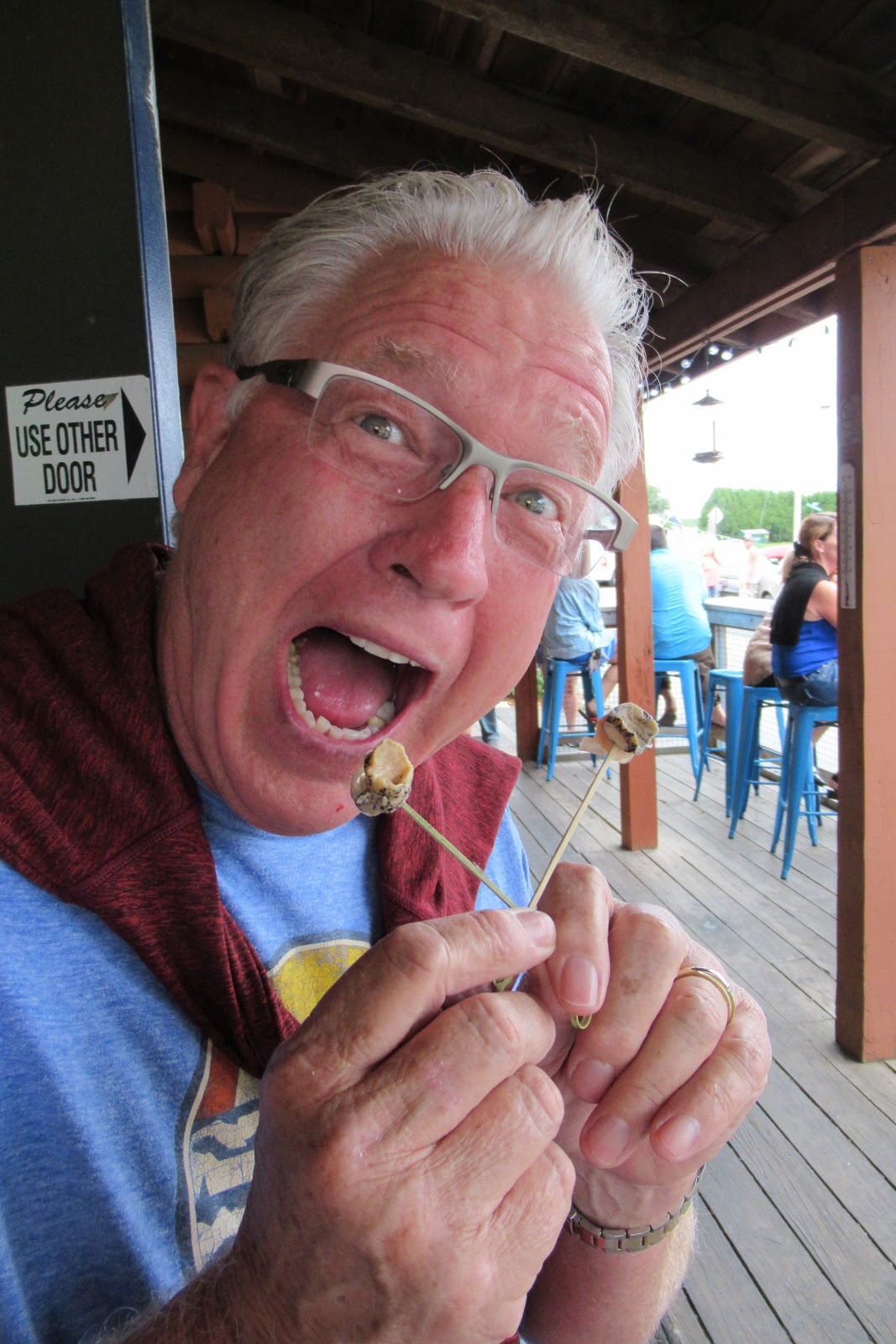
In Minnesota, we had MOSSMAN …..
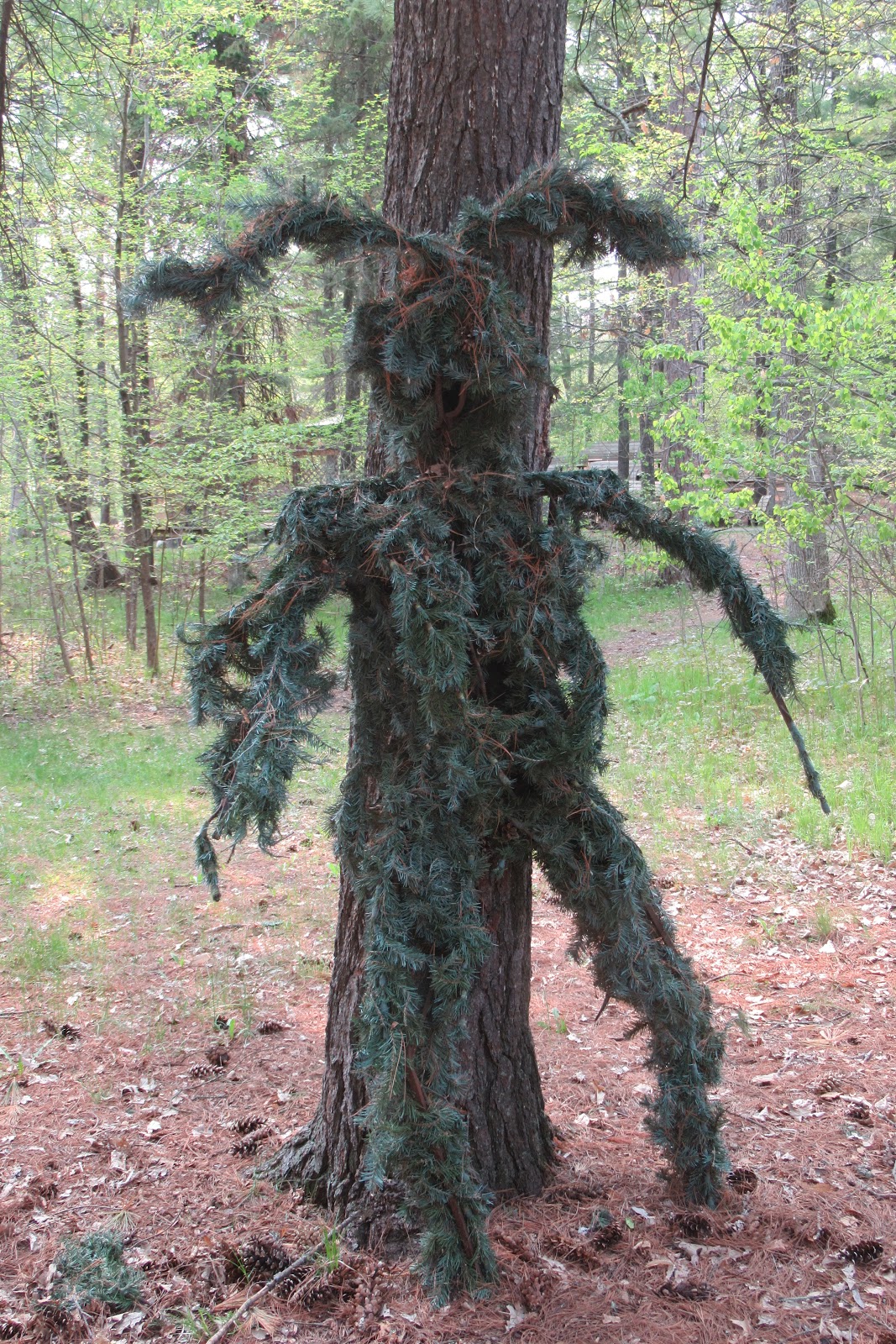
… but here in Maine, it’s SHELLMAN!

Back at the campground, the view of Mount Desert Narrows from the Lucky Charm brought quiet serenity to each evening.
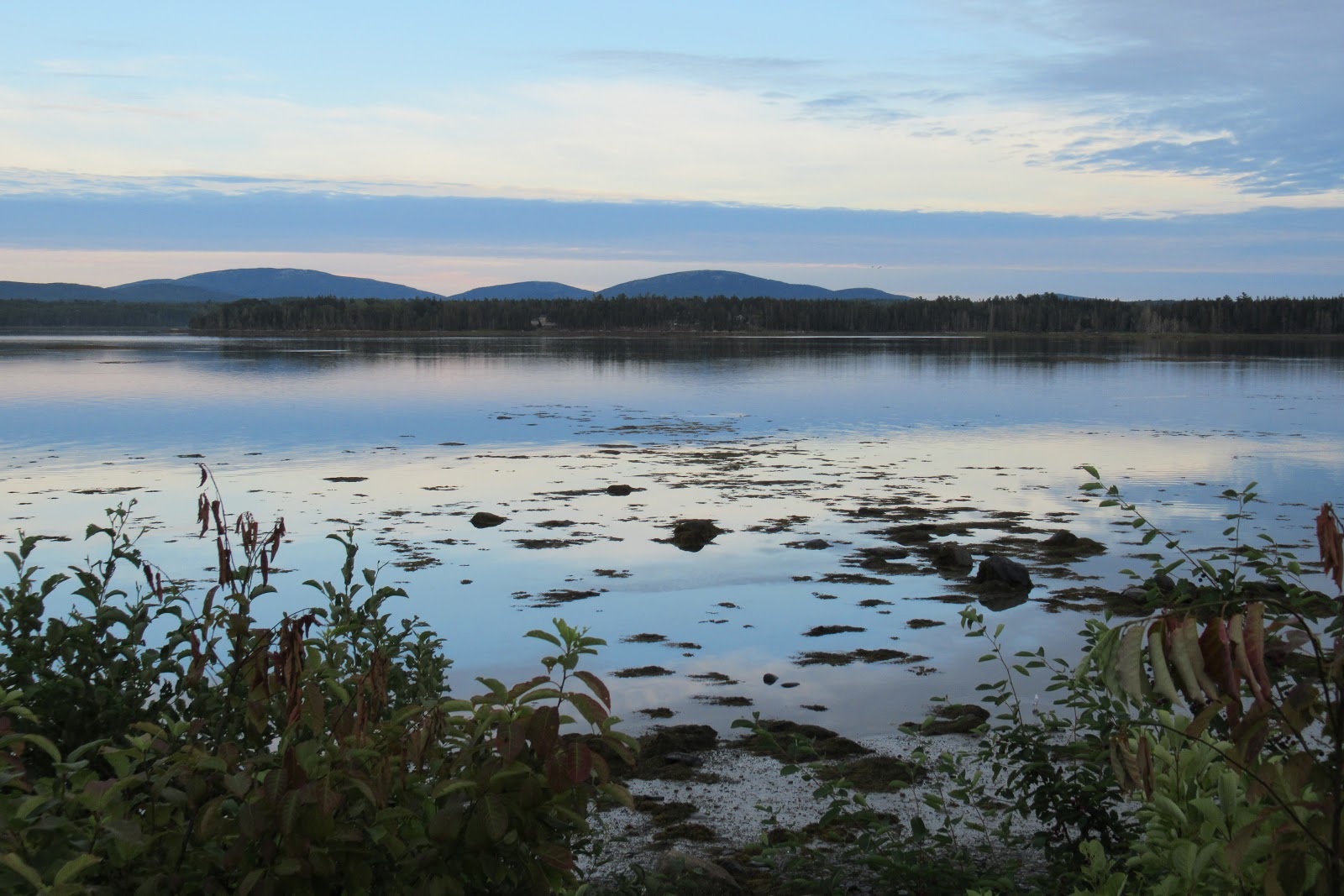
Surprise! It’s a sobriety test! Do you see one bird, or two?
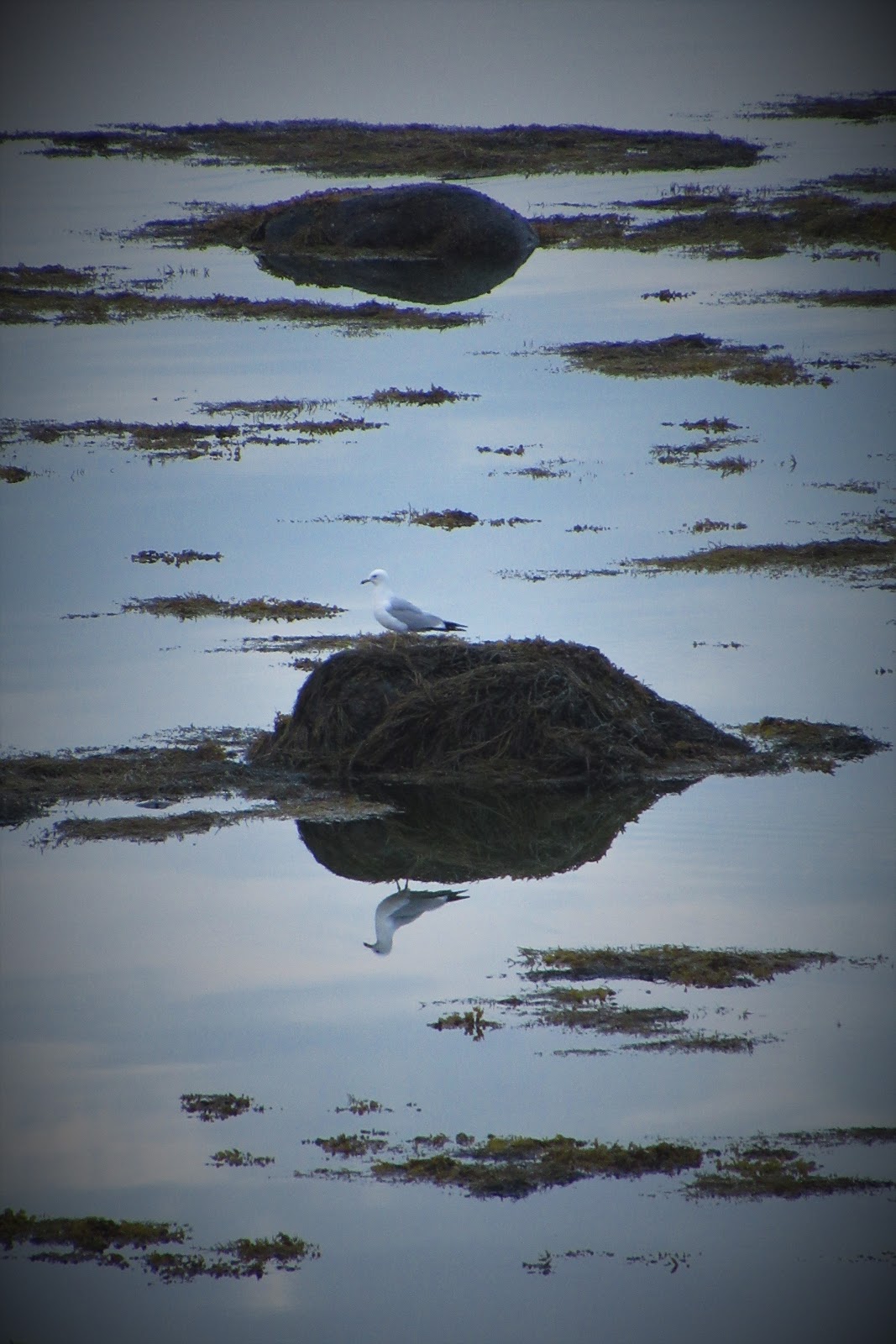
The campground also delivered big excitement, in the form of traveling pie delivery!
For 31 years, this guy and his able-bodied doggie helper have been selling warm pies from the back of his car in this area. Yasssssss!

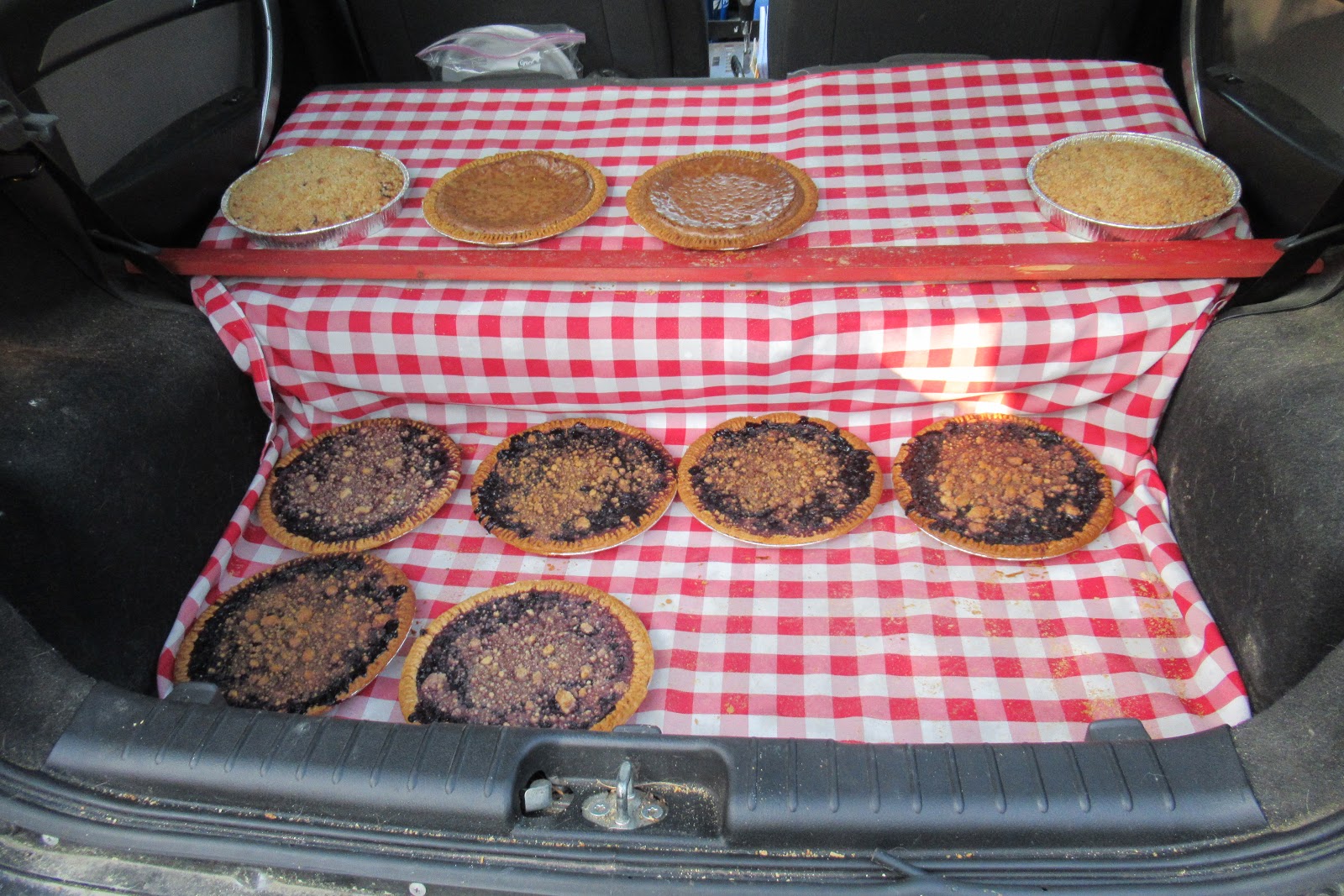
Acadia National Park, you’ve won our hearts with your seaside beauty!
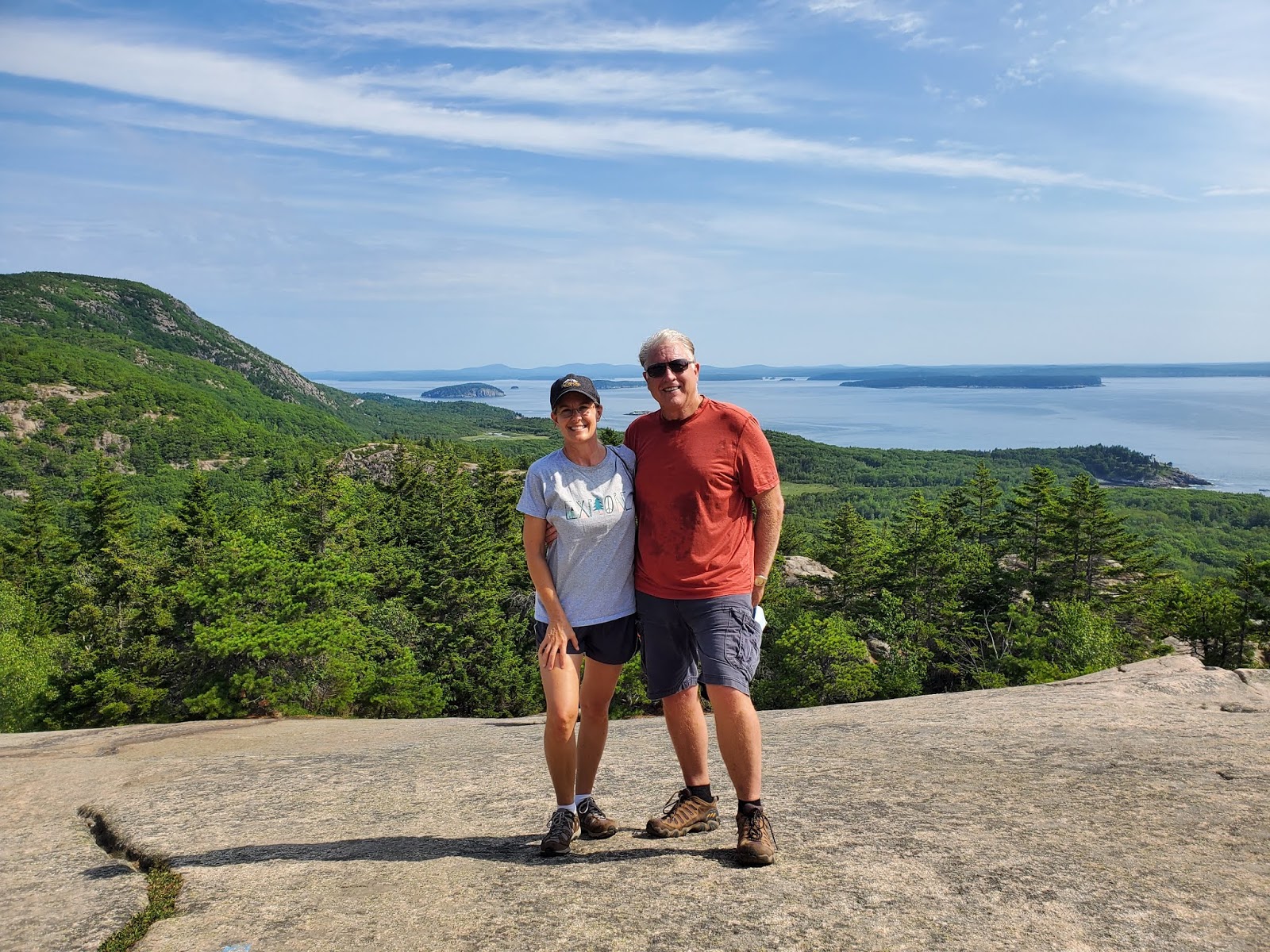
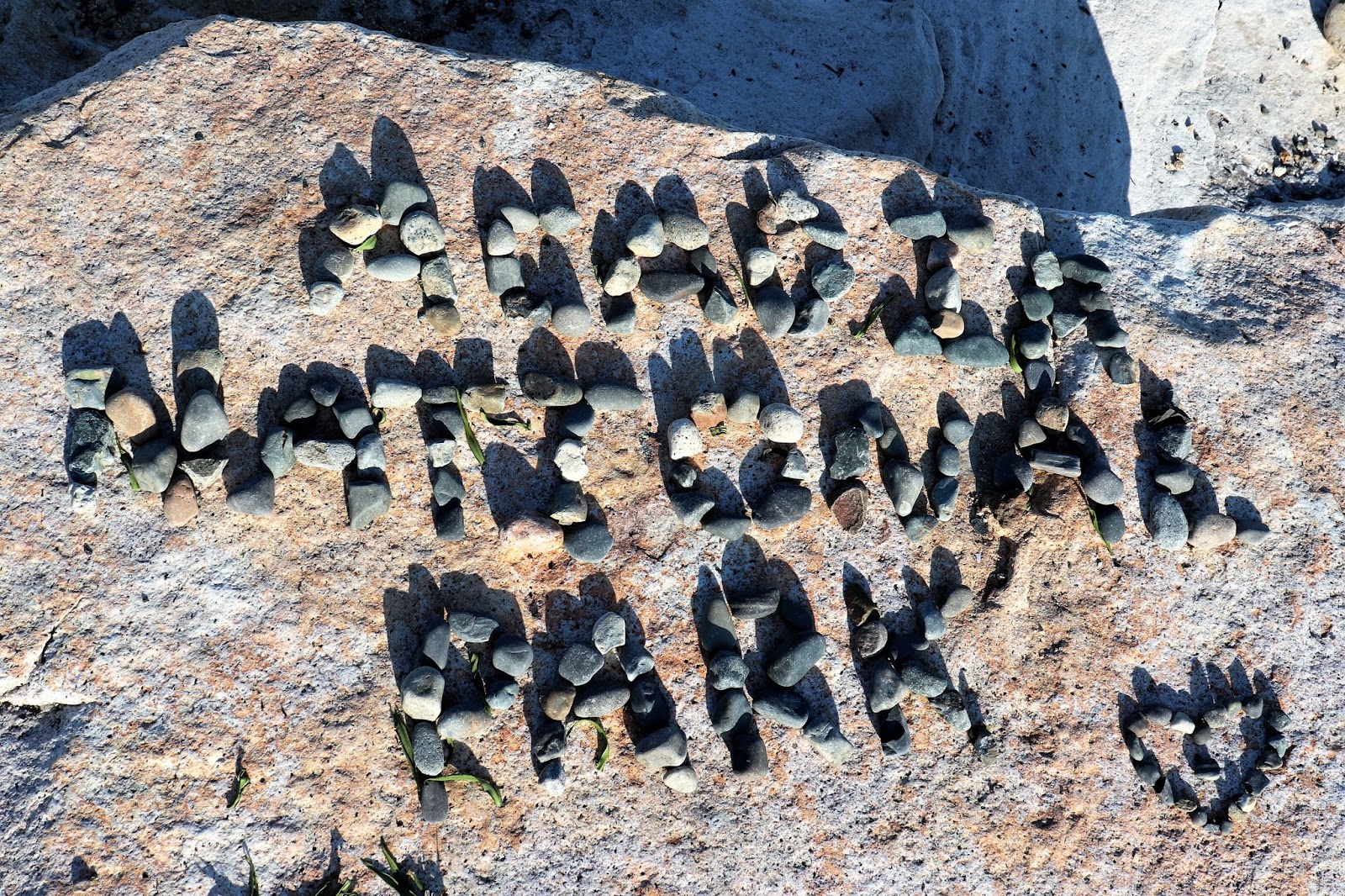
Though we’re near the top of Maine, this area is confusingly called “DownEast,” and now as we head down south, that is called “UP the Coast.” We’ve now crossed the stunning Penobscot Narrows Bridge to “MidCoast Maine,” which is neither Up nor Down. (HELP, I’m so confused)!

But anyway, we are out here somewhere, exactly halfway through this summer’s adventure
… 73 days down and 73 days to go!


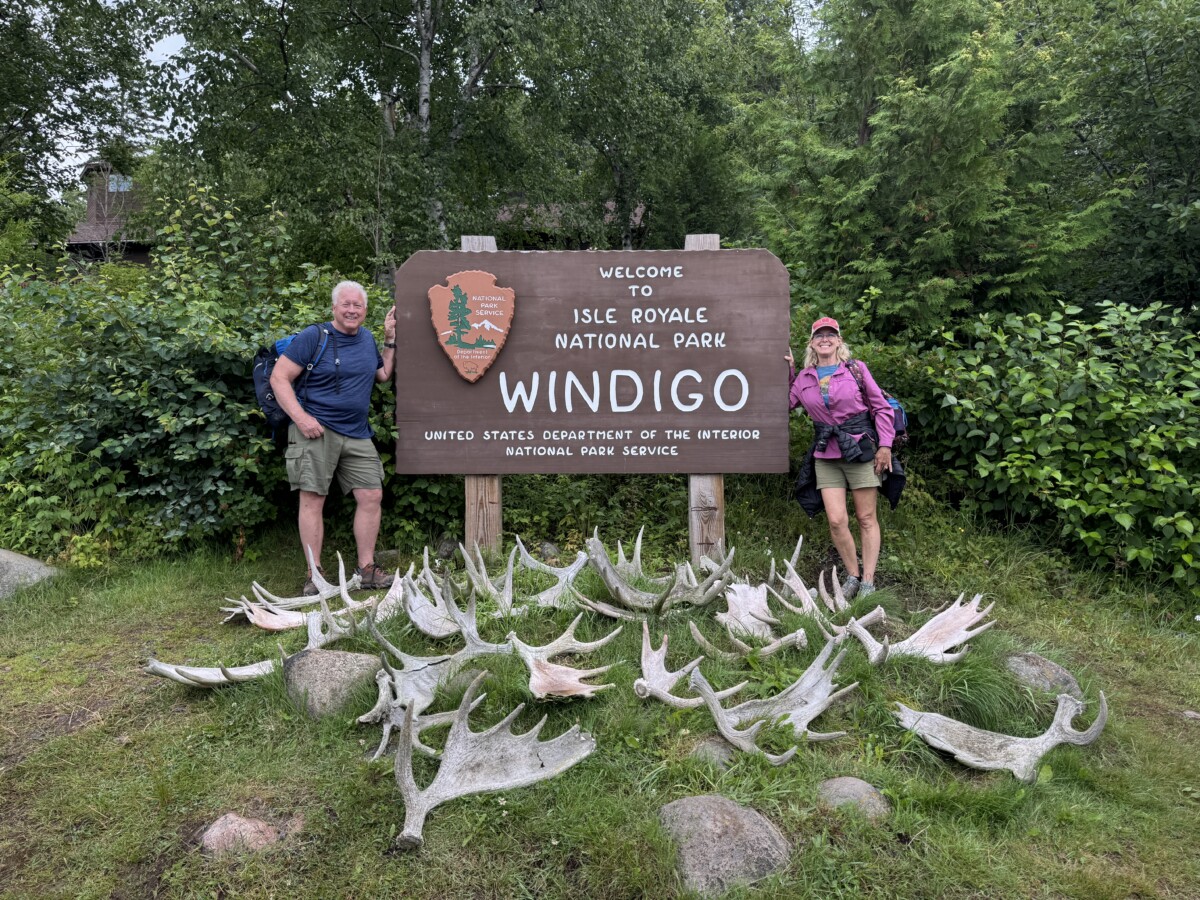
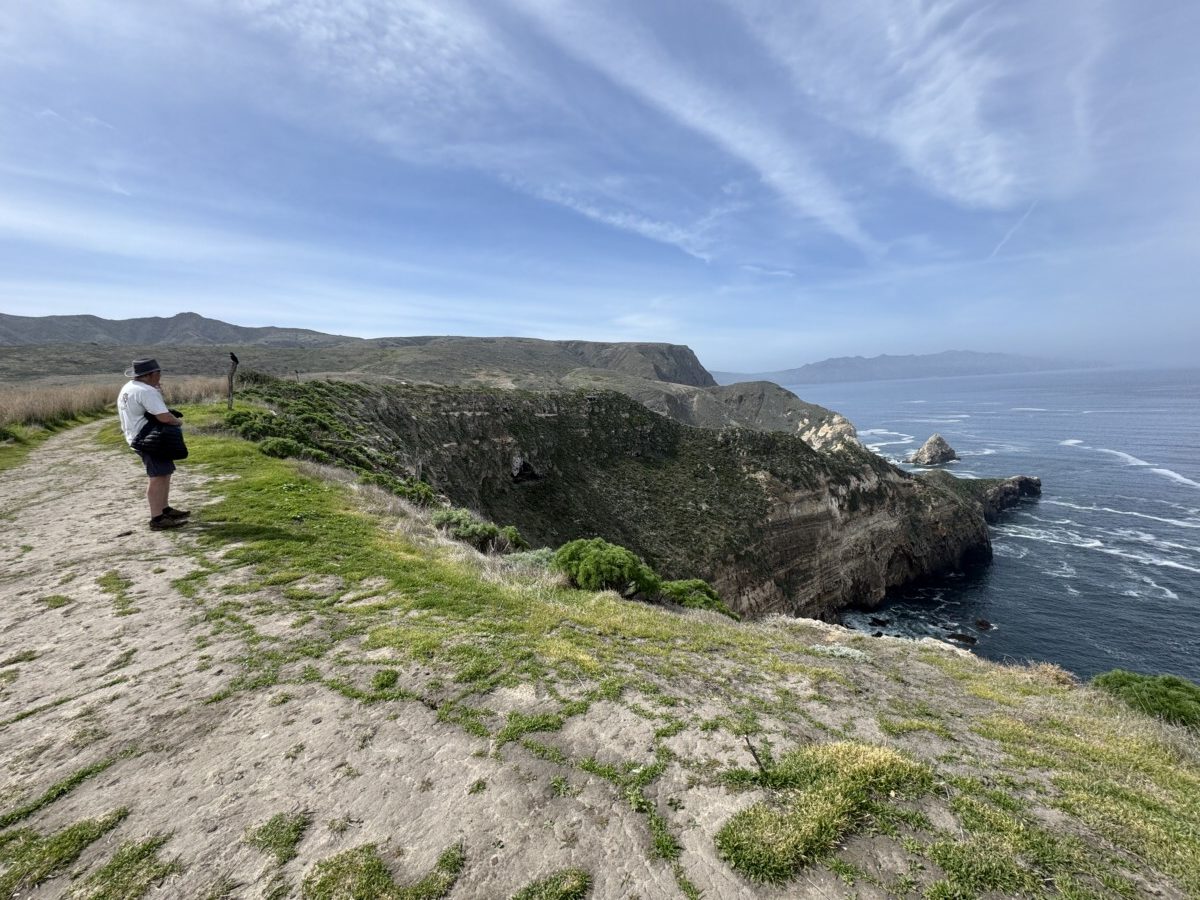
Leave a reply